Establishing Connections; Creating Transformations
Encounters with Relationships
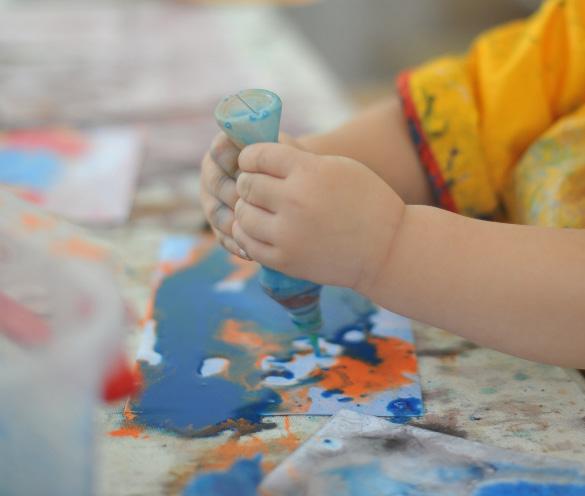
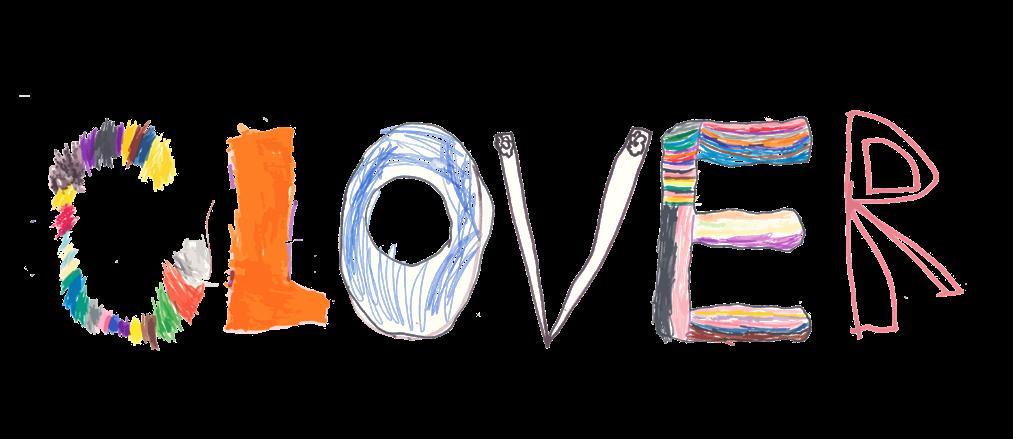

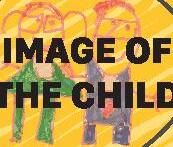
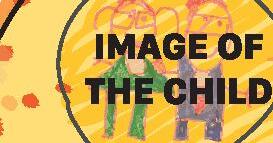






“Dare to dream and make dreams come true”
-To Hoai
At the core of the Reggio Emilia philosophy and our own, is the emphasis on building and sustaining relationships. We believe that strong communities are built on relationships.
So when we gathered as a teaching team early in the year, it was only right that we had many discussions about what we had been noticing in the classes when observing our children. How were they developing a sense of belonging? What were the signs of a community of learners connecting and how could we strengthen this?
We know that it is through responsive and reciprocal relationships with people, places and things that children have opportunities to try out their ideas and refine their working theories.
We noticed common threads that resonated throughout the school; attachment and change therefore Establishing Connections; Creating Transformations was born.
Empowering children to learn and grow requires teachers to foster children’s agency to create and act on their own ideas. So it was vital that the children were able todiscover the connection between themselves and their environment, the connecting links between family and school, the relationships between materials and how all of these could be transformed.
Through the hundred languages we have explored these very broad concepts of connection and transformation in meaningful, age appropriate ways.It has also been a journey of discovering and strengthening the wonderful dispositions of learning we had noticed. The resilience, courage, curiosity, persistence and determination found in our children alongside the kindness and respect they were displaying as they connected and formed relationships. At the beginning of our project we also met Cricket. We honoured To Hoai,the great Vietnamese writer through his wonderful book written in the 1930’s ‘The Adventures of Cricket’. Connection and transformation were two very strong themes that ran throughout the story. Connection being the joining together in harmony that cricket discovered through the relationships he made and the transformation cricket undertakes throughout his journey, of his character, his beliefs, his attitudes and his way of life.We all felt cricket’s journey became our own.
“Children need the freedom to appreciate the infinite resources of their hands, their eyes and their ears, the resources of forms, materials, sounds and colours”
-
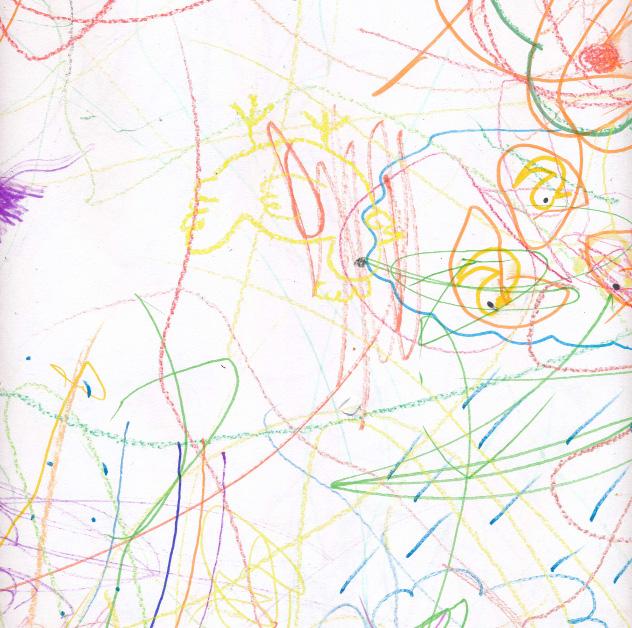
LORIS MALAGUZZI
Since the beginning of the year, our Clover friends have inspired all of us with their joyful, bold and creative experimenting. The Clover children have dared to explore materials in deep and thought-provoking ways. As committed researchers, they have focused on certain materials over the course of the year. By continuing to explore further and deeper, the Clover children have experienced first-hand how limitless each material can be. From pencils, markers, oil pastels and paints to sand, water, pom-poms and loose parts, the Clover children are constantly finding new ways to push and extend the possibilities for experimentation, expression, communication and learning.

All of our Clover friends are interested in drawing on the different surfaces around them. When we offer them one canvas, they find another. It all began on our first day as Clover class. We had set up bamboo leaves over paper on our easel. An An chose a green piece of chalk and drew two green sketches besides each twig of bamboo. Observing that she might have created representations of the leaves, we fetched more jungle leaves and added them to a large piece of paper in our atelier. We offered tempera paint. Most of the children painted around the leaves, but Emi painted on them. Some children began mixing the paint with their hands and painting on the mirror on our table. Seeing that they enjoyed mixing the paint on the mirrors, we invited them to paint on our mirror partition. In the following days, our friends explored more mark-making techniques and tools. Often, our friends would test their drawing materials on different surfaces such as the wall, wooden blocks, chairs, mirrors and even their own hands, arms and faces!
After our friends began holding their paper up to the walls to draw, we began covering our walls in paper. We filled large sheets of paper with a myriad of colorful explorations in drawing. However, even when we covered our walls in paper, our friends still found new corners and spaces to draw on in our room.
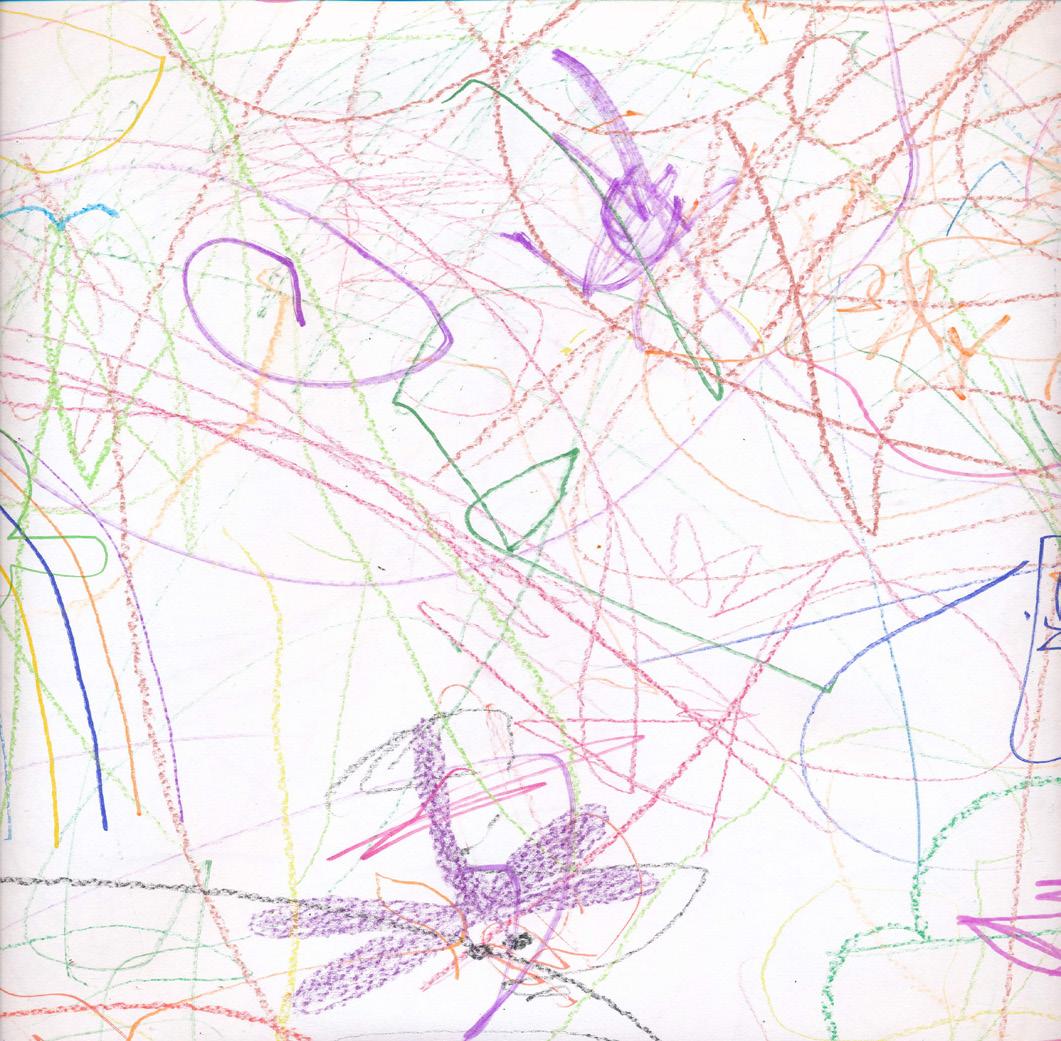
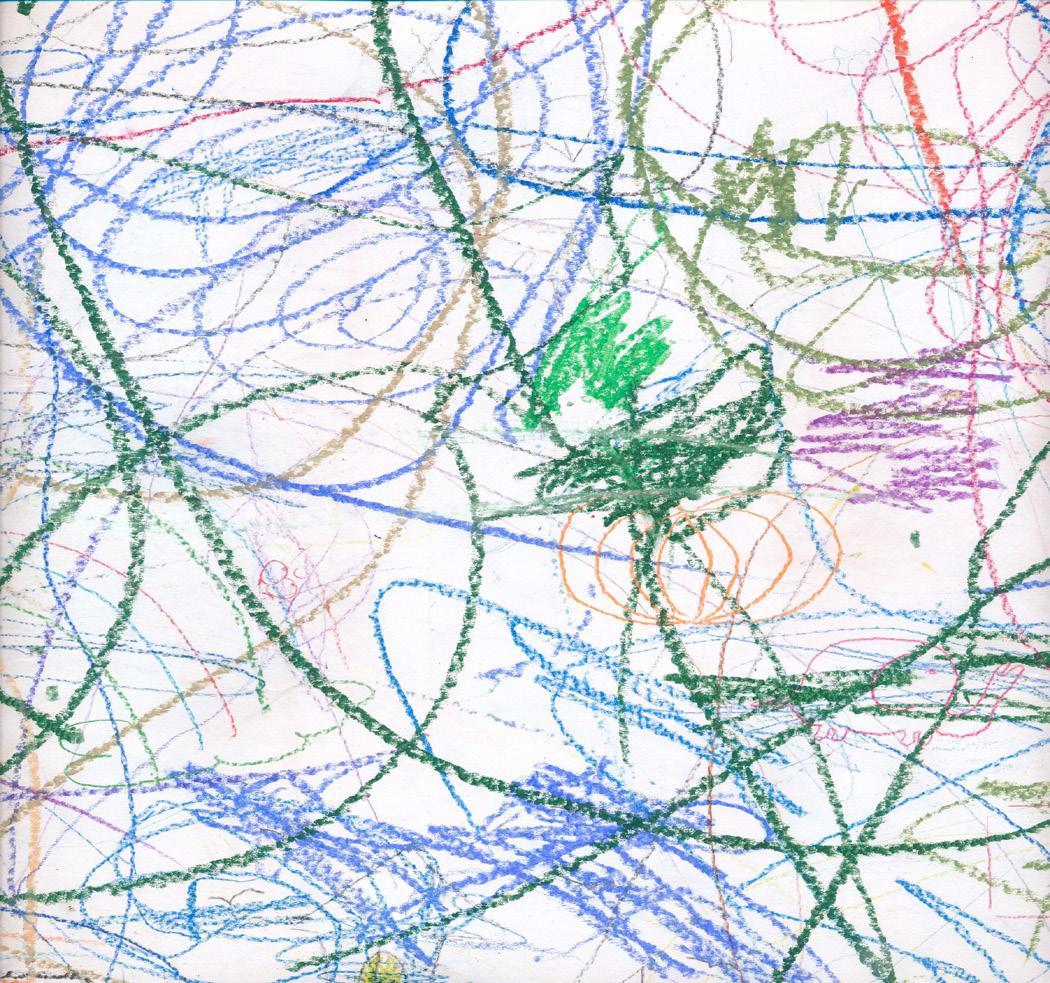
Clover Collaborative Artwork
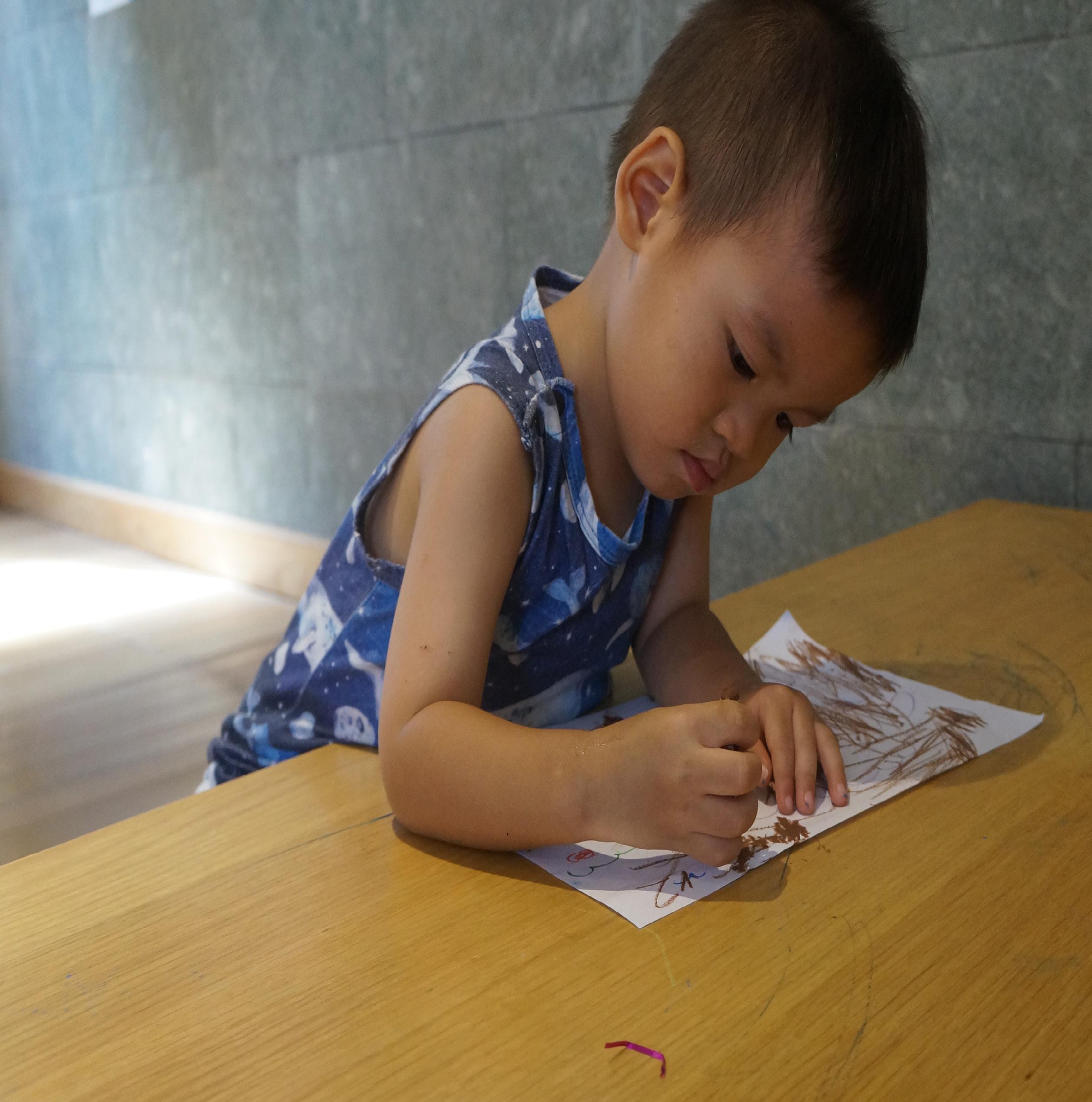
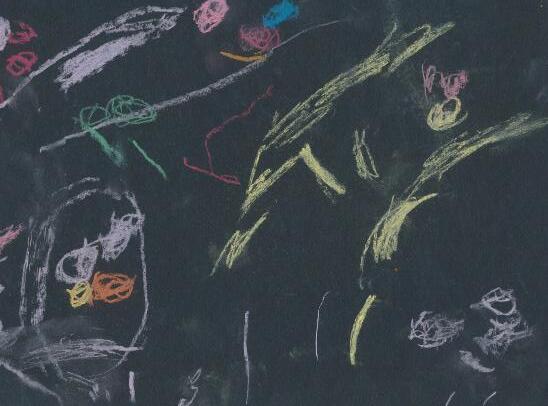

Watercolour - An An
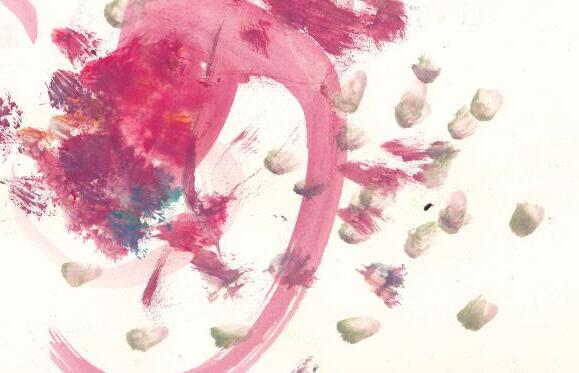
Watercolour - Khang
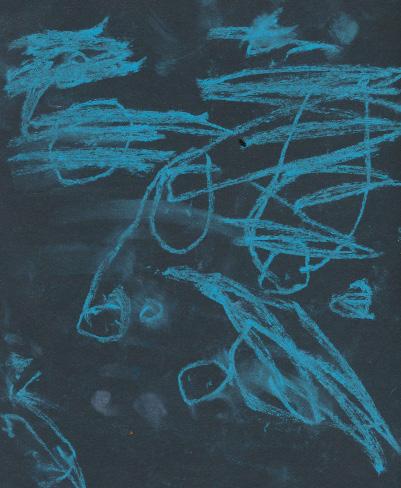
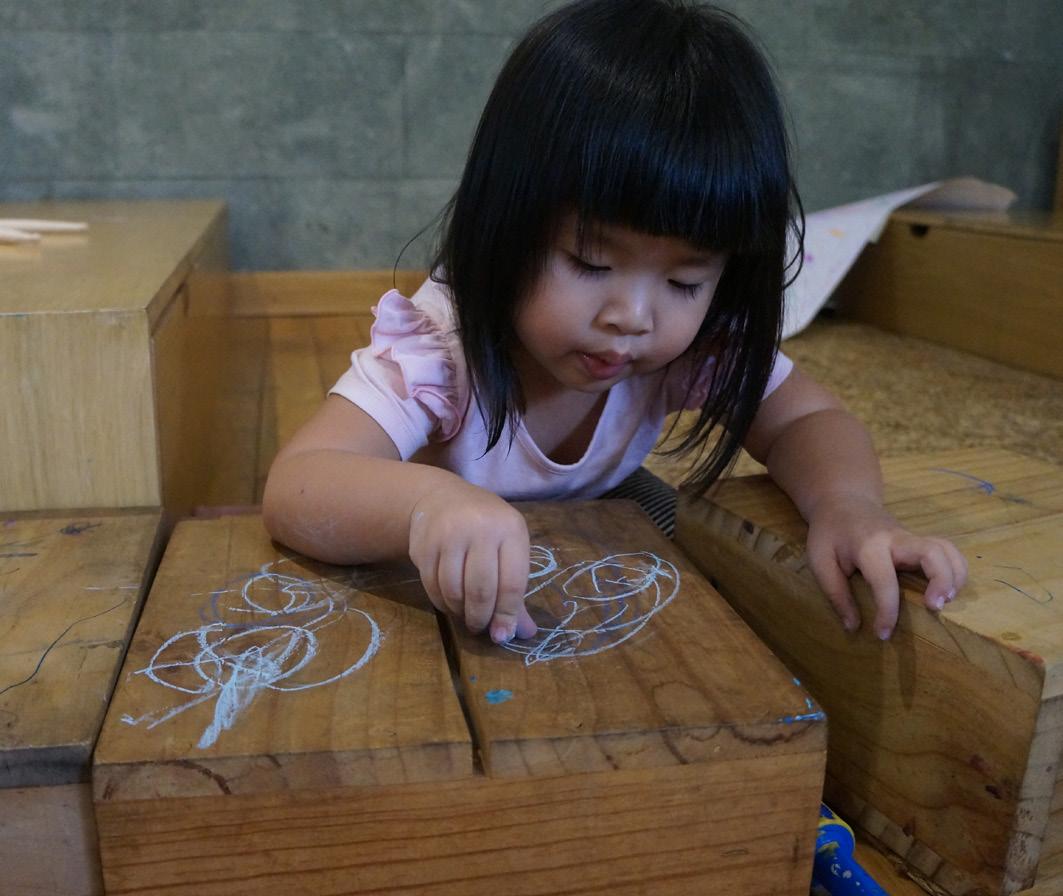
The children seem fascinated by the control they are gaining over their scribbling. They are deeply interested in the connection between their movements and the lines that appear before them! They are also still discovering what drawing utensils can do and how they can move!
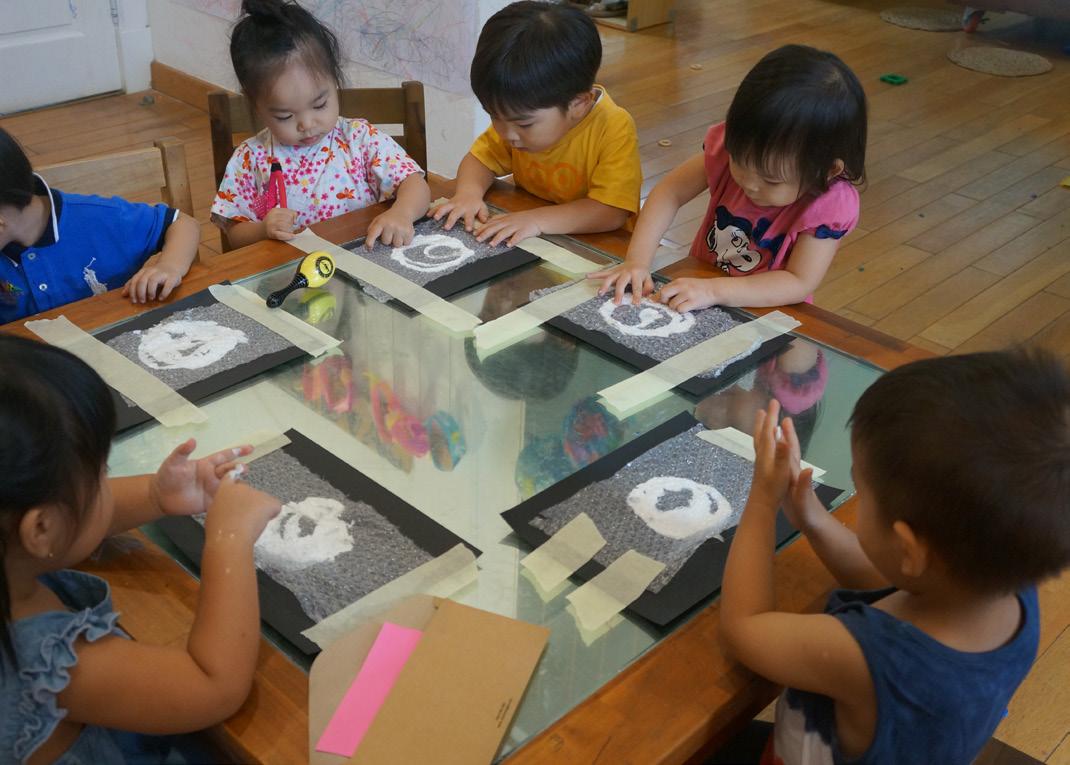
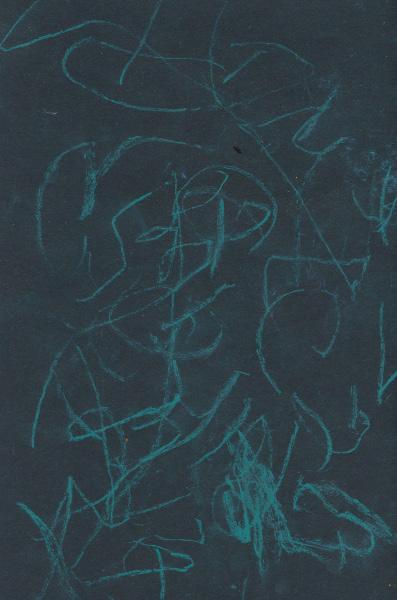
We also believe that the children are interested in transforming their environment. They love to stick clay, tape and playdough onto the walls and mirrors. They really enjoy standing as they work and transforming windows, mirrors, walls and furniture with their artwork. We believe that the children relish the freedom to change and alter their environment. We have observed that they especially enjoy using chalk and marker to draw on wood, walls and paper. We believe that they choose these drawing materials because they make clear, bold marks. They seem to be testing whether or not their marks will show up on different surfaces. We also believe that they are deeply interested in the increased control they are gaining over their scribbling. Some children are beginning to make representations of their friends and family members using lines, dots and circles.
We wonder how the children’s drawings will develop overtime. Specifically, we are curious to see how they use drawing, language, lines, symbolism and more to communicate their working theories, share their passions and ideas and learn about the world around them.
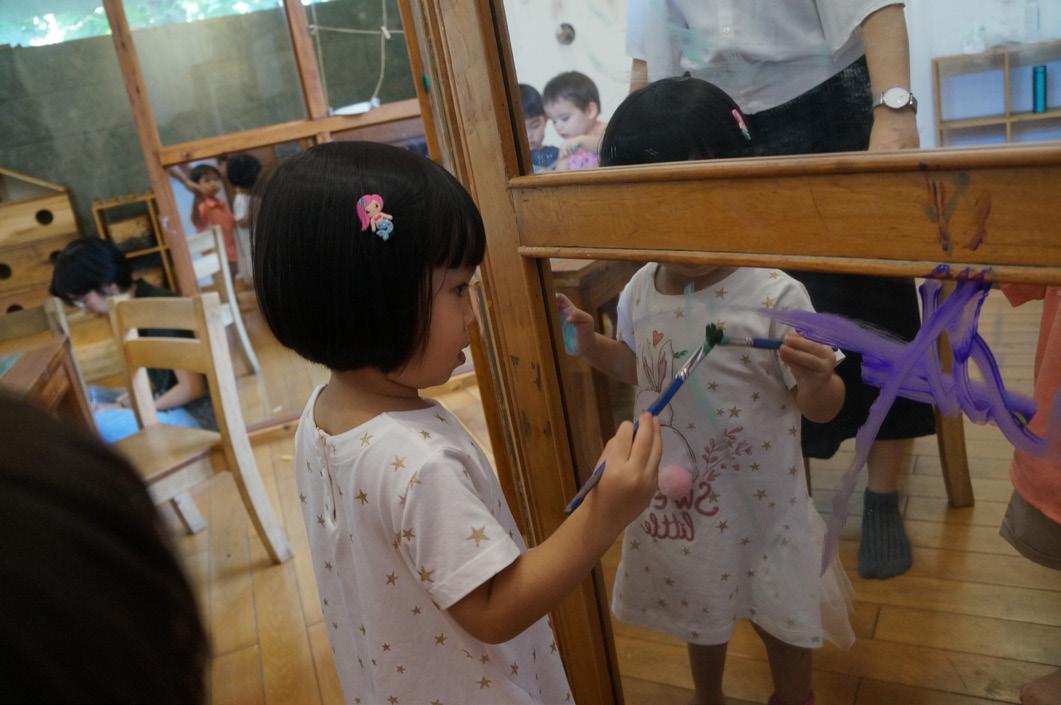
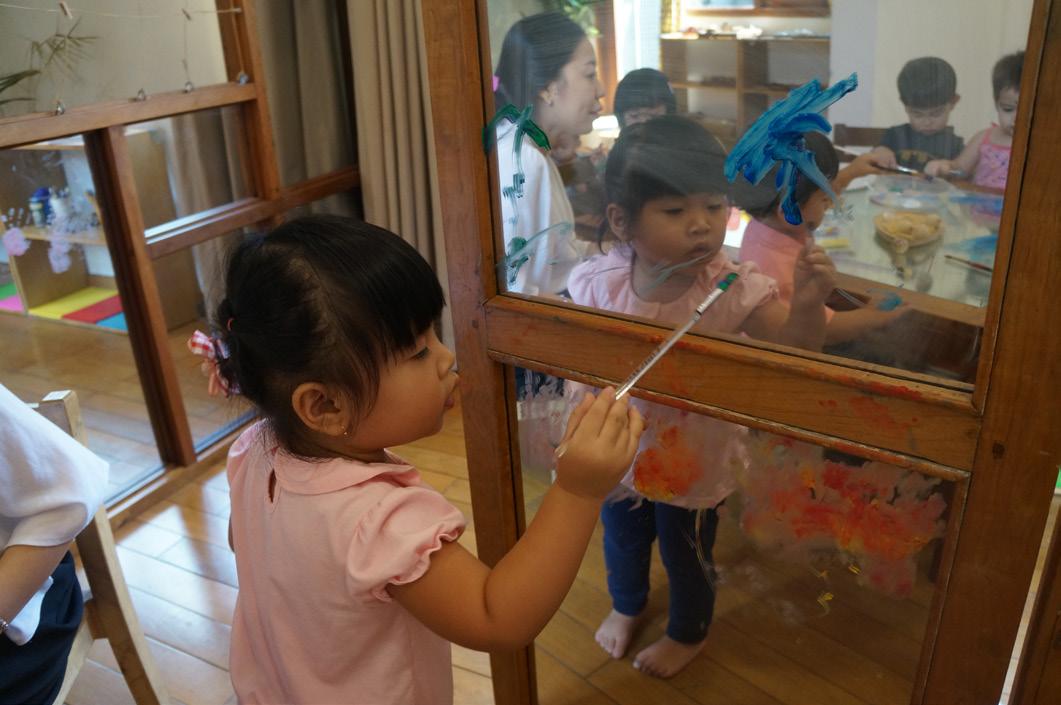
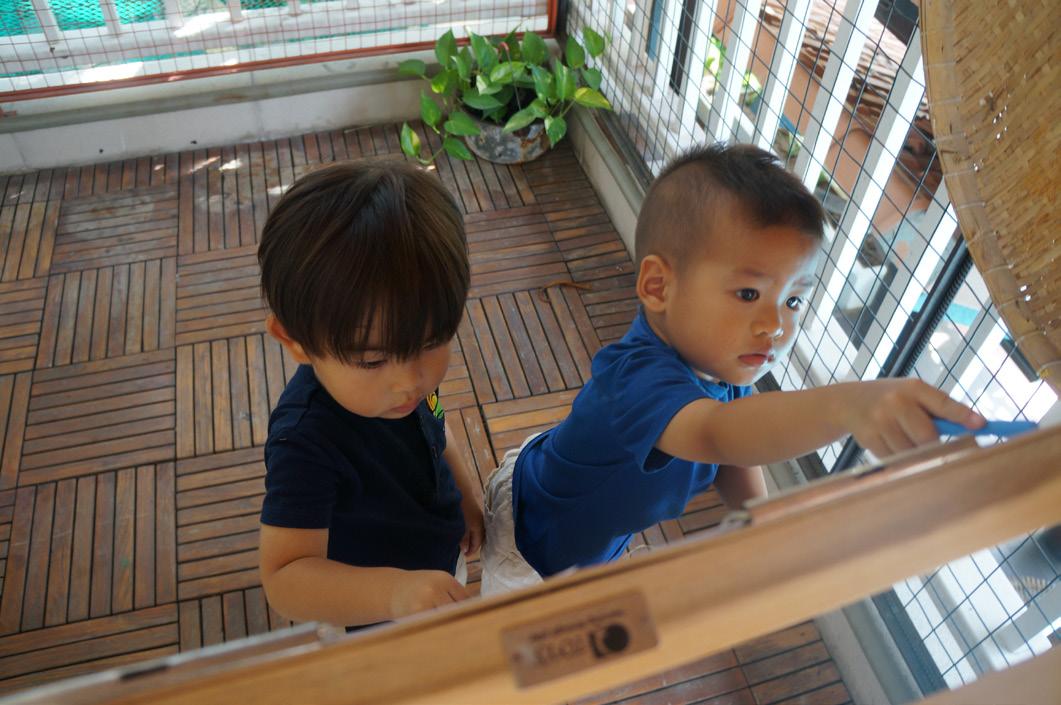
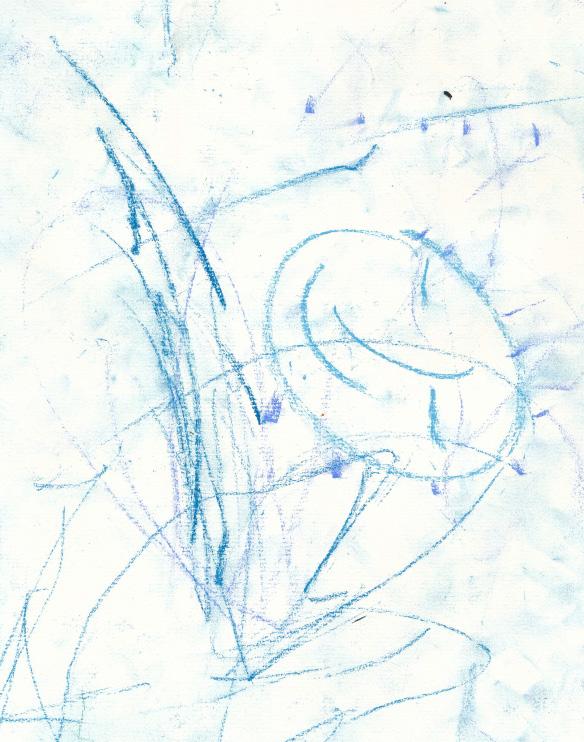
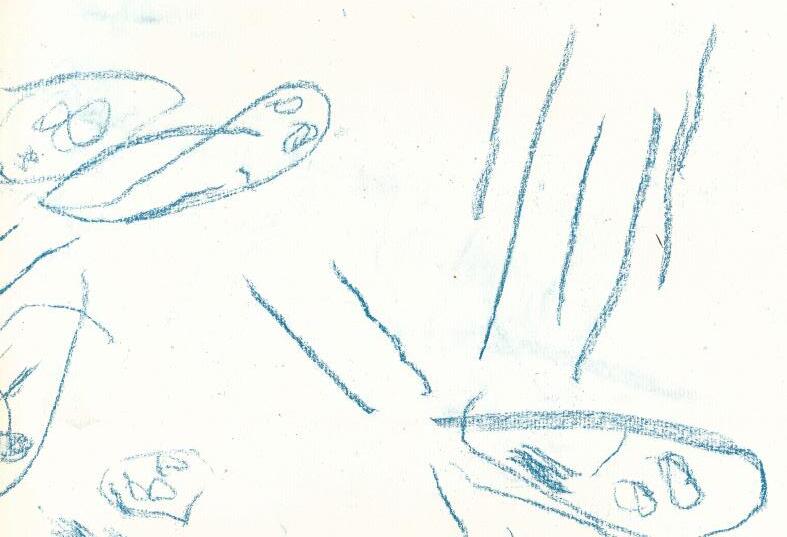
Artwork by Emi
Since our Clover friends are very passionate mark-makers, we decided to try an experiment in mark-making! Our drawing provocation included only red or blue drawing marking tools. We used chalk and oil pastels as well as colored pencils and felt-tip pens. We thought that this provocation might inspire our friends to focus on the thickness of the lines, shine, smudge and other elements of these different tools. Conversely, we thought that this provocation might also inspire our friends to think deeply about the colors red and blue. What red and blue things are they most interested in? What red or blue things could they dream up? Will the chosen colors steer and direct their play or will they dream up new thoughts without regard for color?
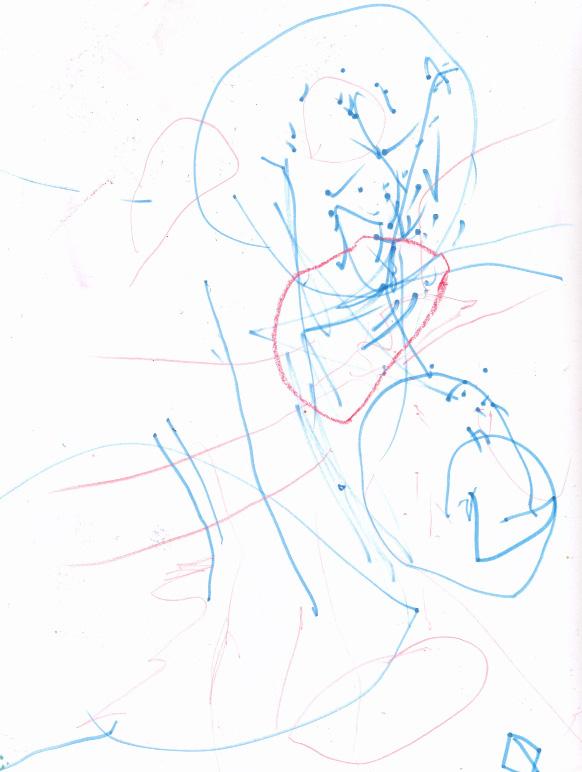
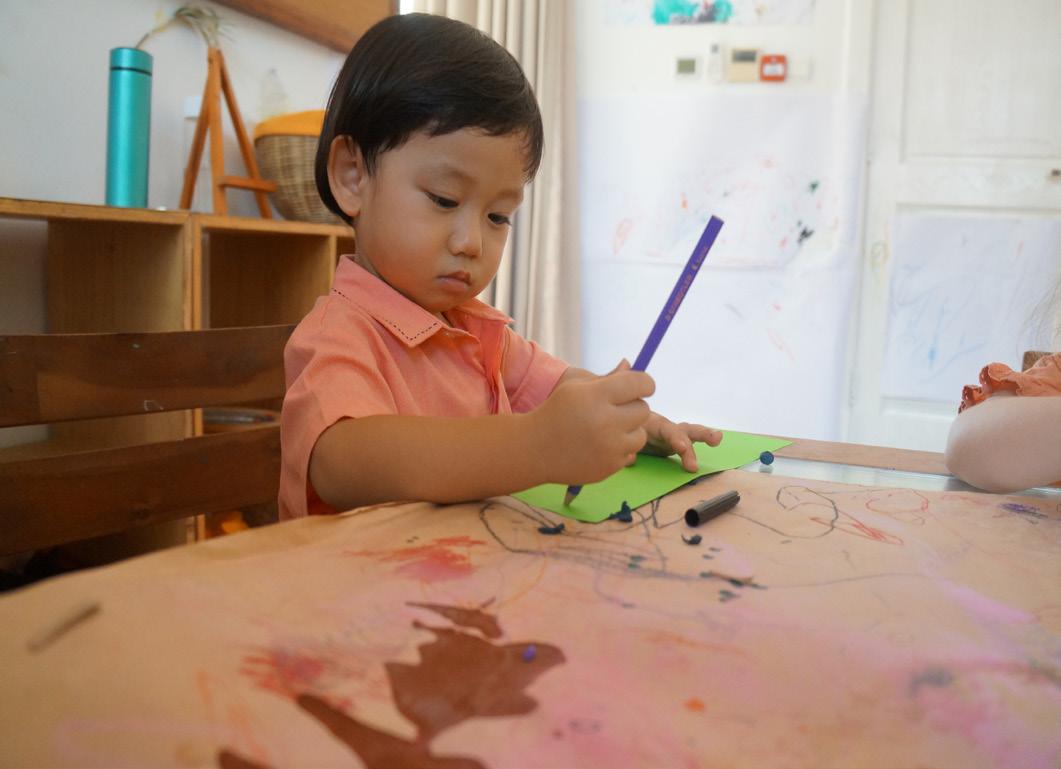
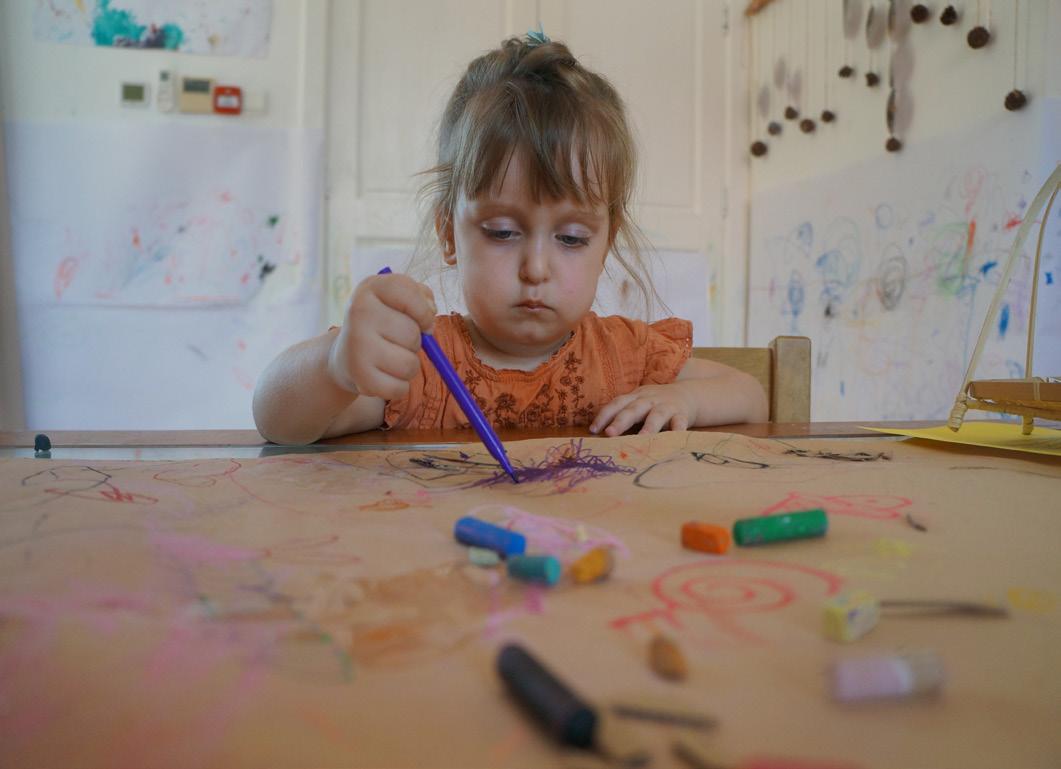
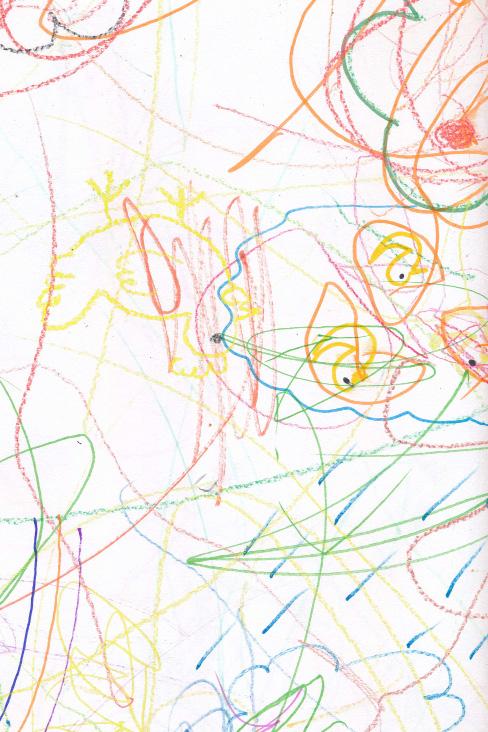
"Creativity seems to emerge from multiple experiences, coupled with a well-supported development of personal resources including a sense of freedom to venture beyond the known."
- Loris Malaguzzi
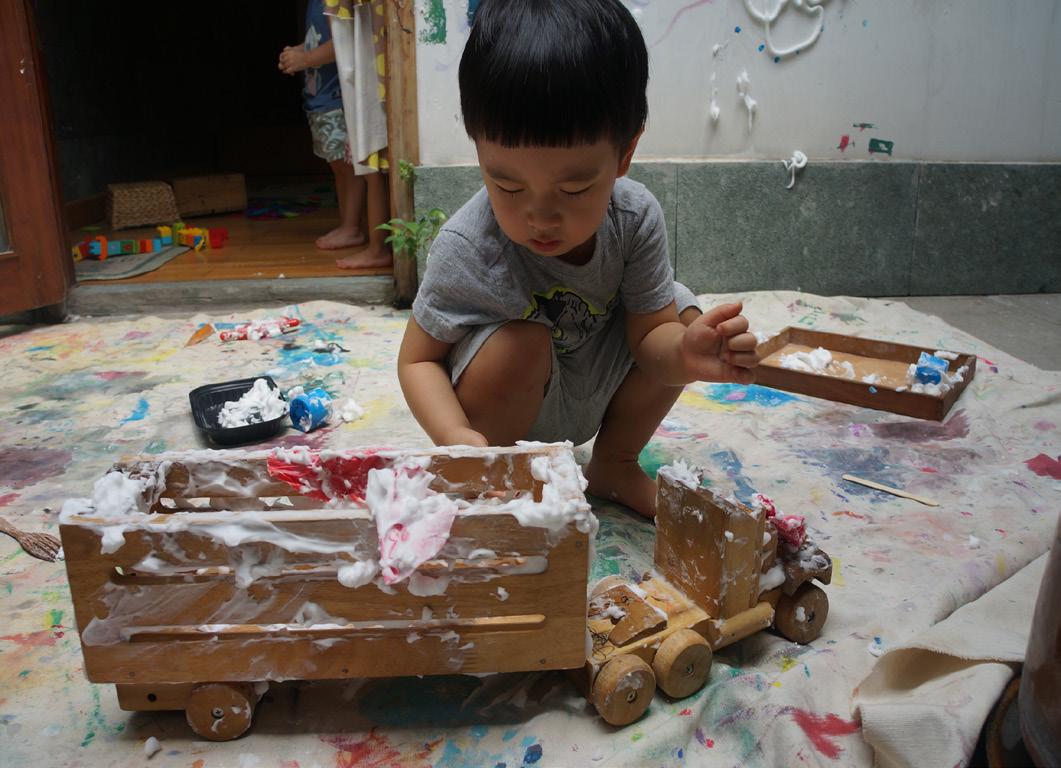
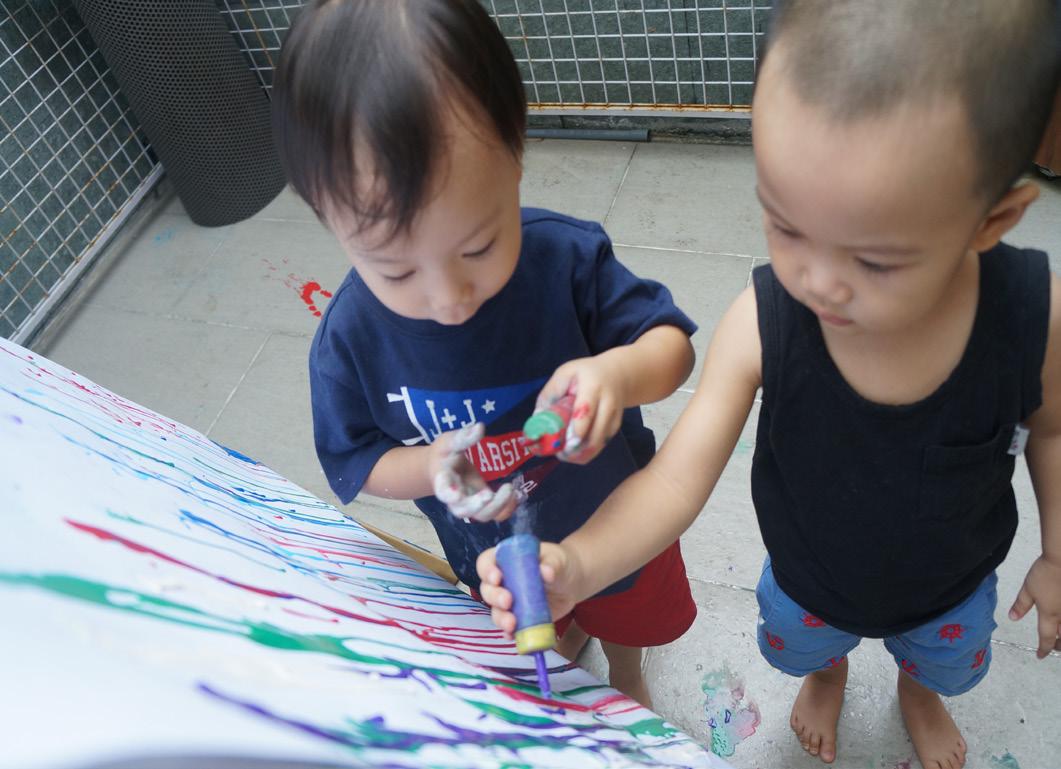
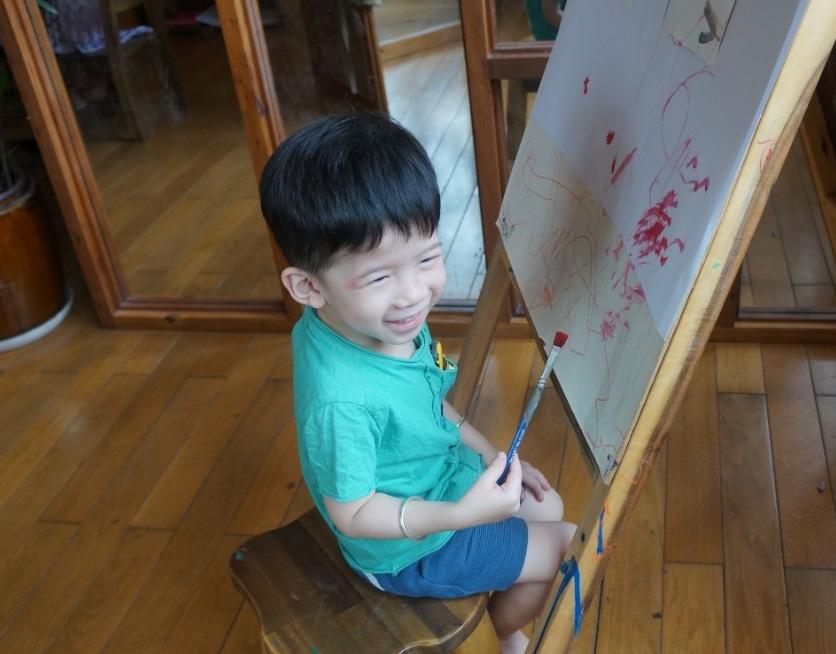
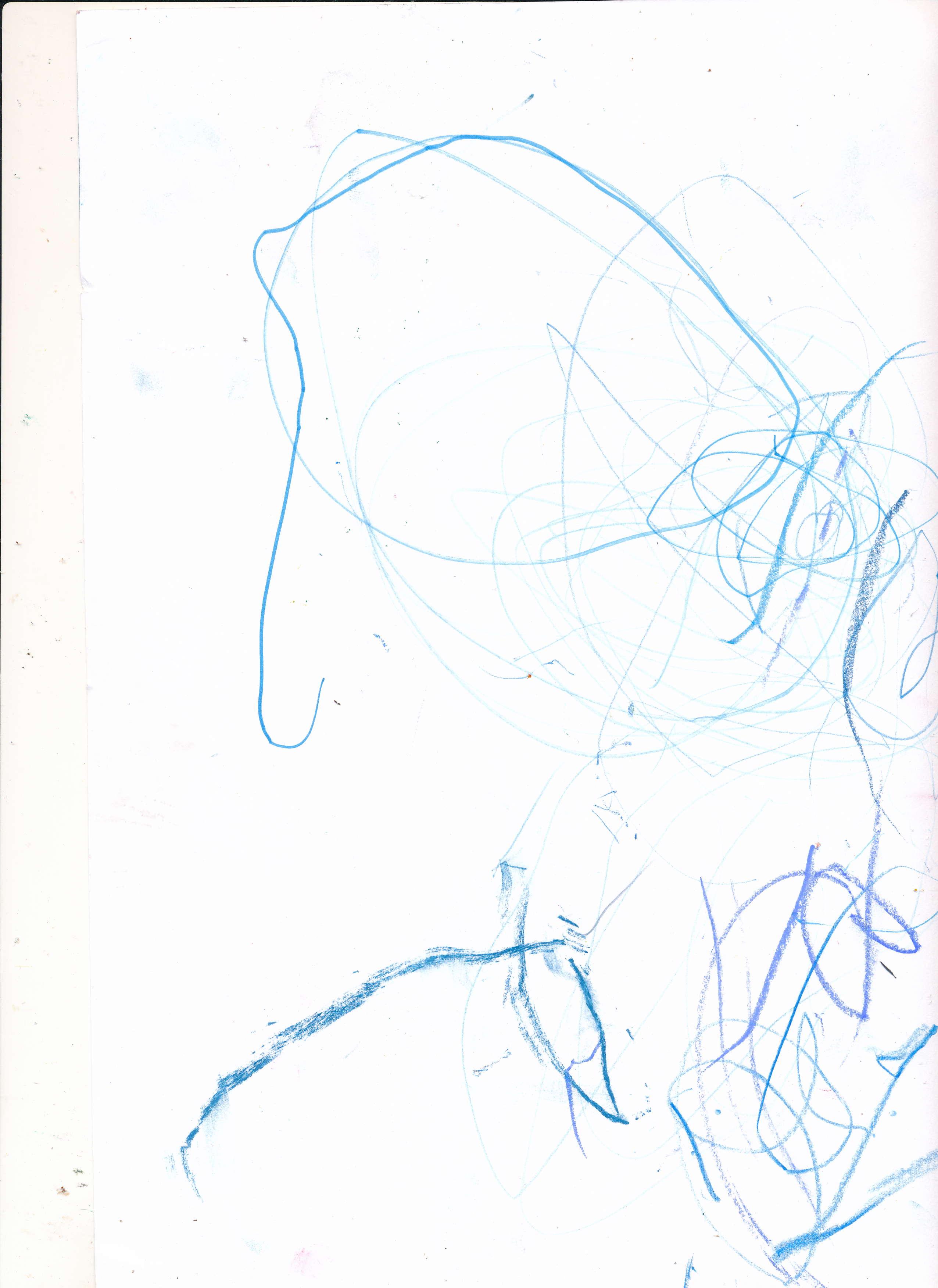
“Colour is a power which directly influences the soul”
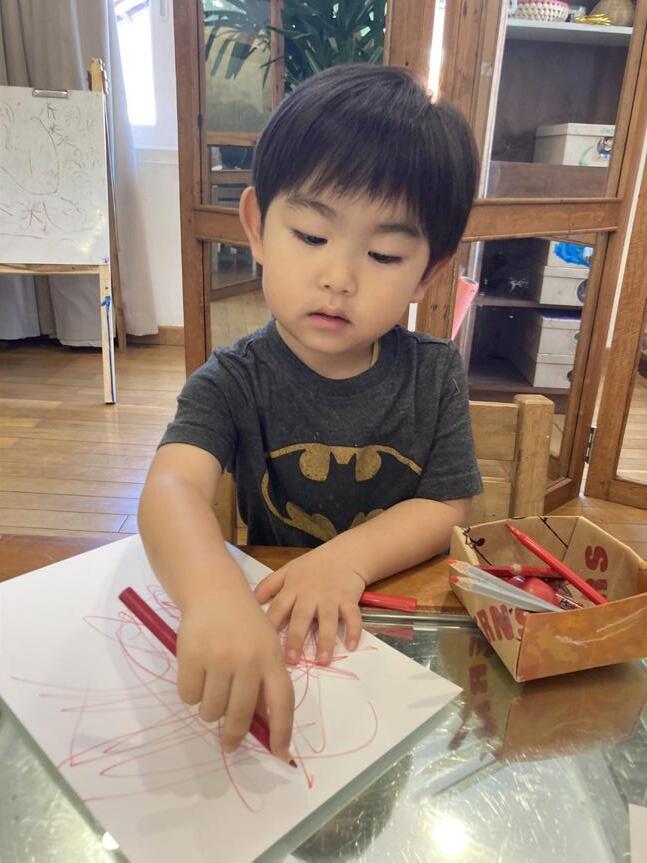
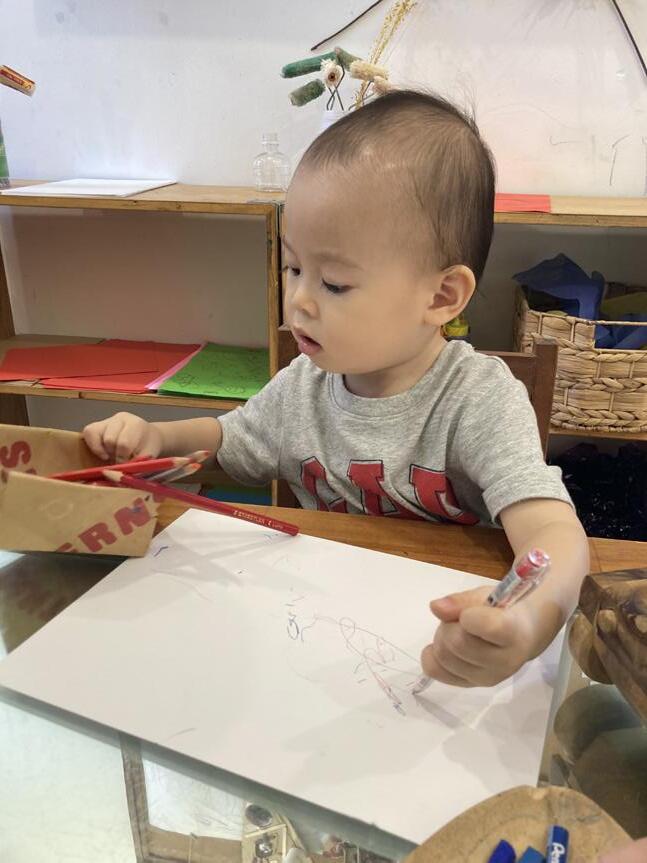
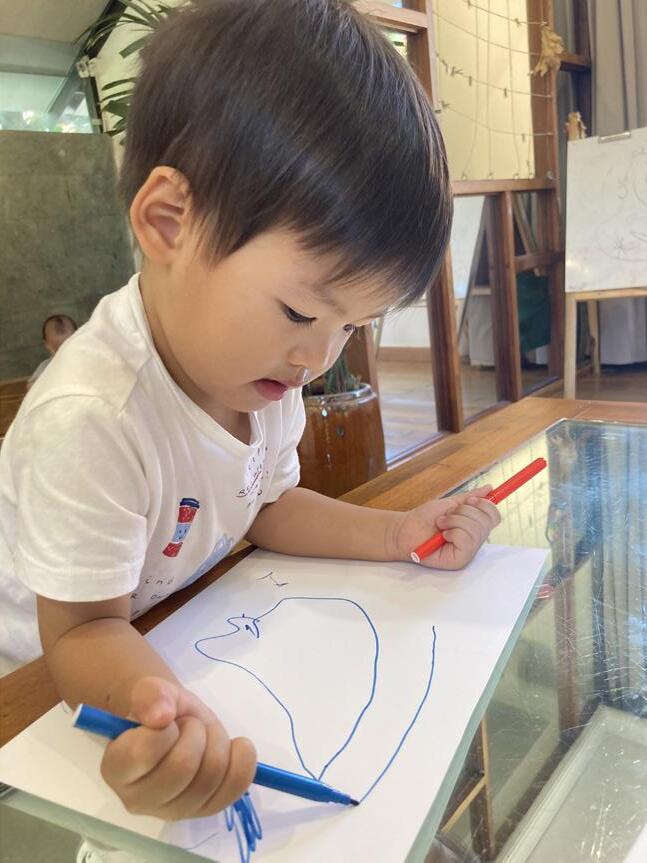
Paul was hesitant to join the provocation until we offered him the blue and red pens that we were using to take notes. After drawing with the pens, Paul decided to explore the other marking tool!
Bell began by collecting the drawing utensils and sorting them before drawing with two utensils at once!
Our friends also enjoyed collecting red and blue items. A red ball was placed in our box of red drawing utensils. Ti noticed Duong stirring a red pencil in a plastic bottle and decided to do the same. Later, they collected red pompoms and pastels in their bottles.
Jessica decided to drawing a swimming pool in all red! When we asked her if the water in the her pool was hot, she thought about the idea and repeated “water hot.”
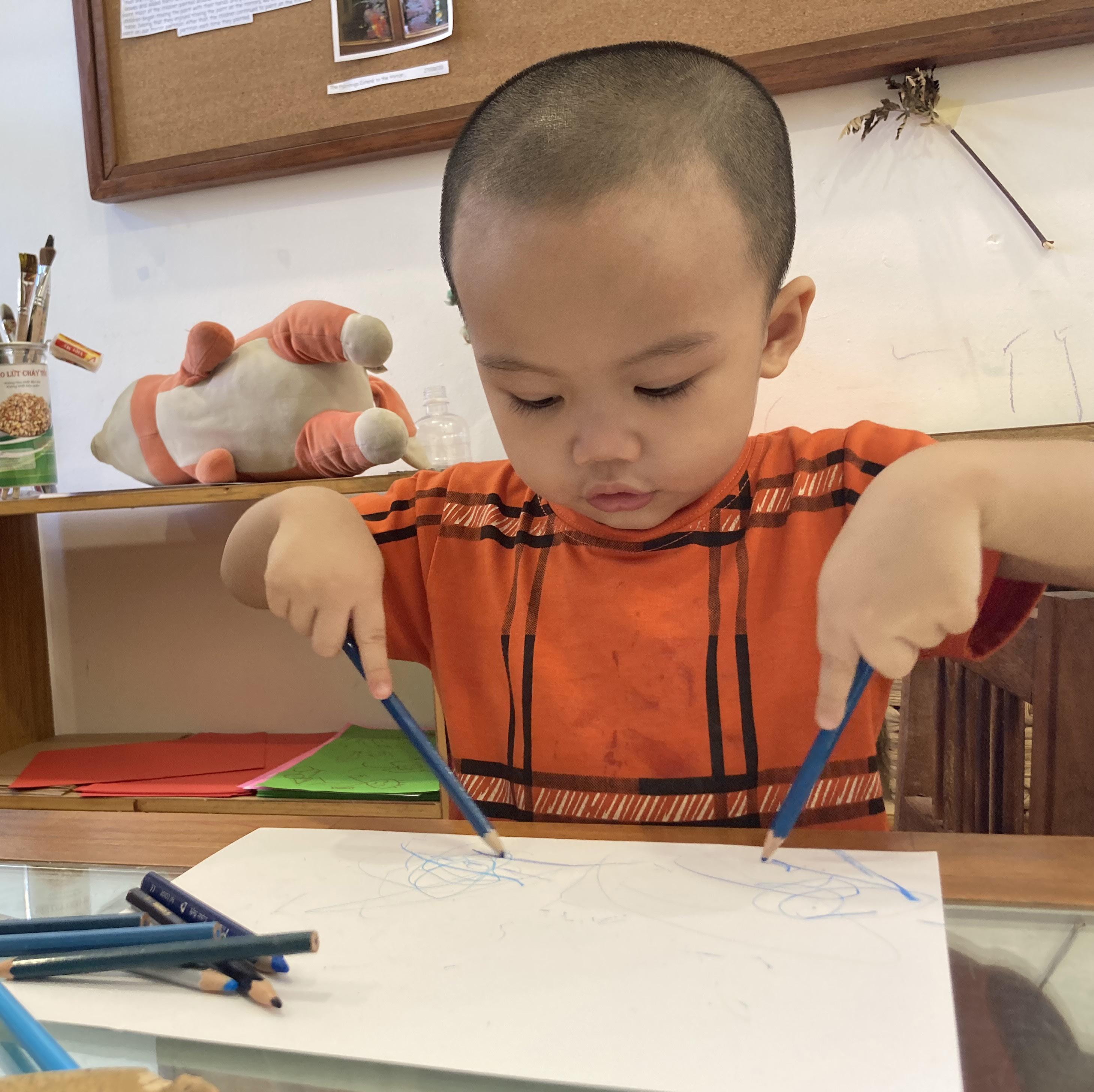
We began our investigations using turmeric which is famous for producing rich hues. Lids filled with water and turmeric powder were laid on the table. Watercolor paper and paint brushes were ready for stirring, testing and whatever other actions might occur!
Our friends immediately tipped the water into the turmeric powder and began stirring! They were also eager to paint with their mixtures. You seemed quite intent as you painted with your new paint, Clover friends. I think that you were curious about the powder and about the richer colors and the lighter colors. When you poured the paint onto the paper or applied paint over and over, your colors became more bold! Through painting, you were testing your color and learning about what you had made.
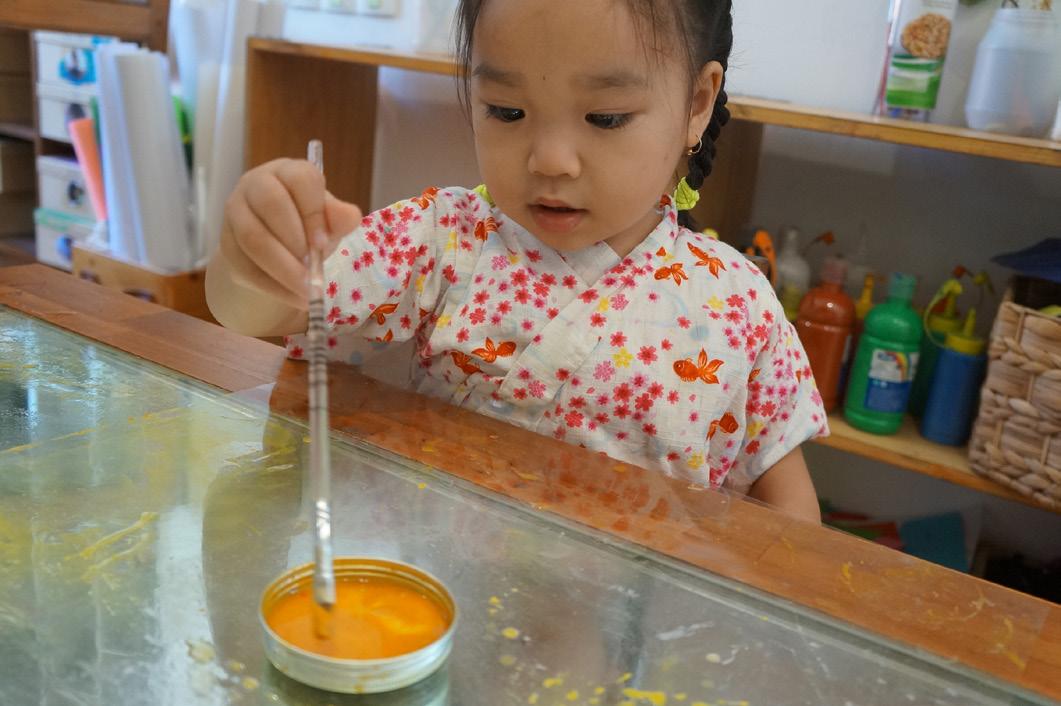
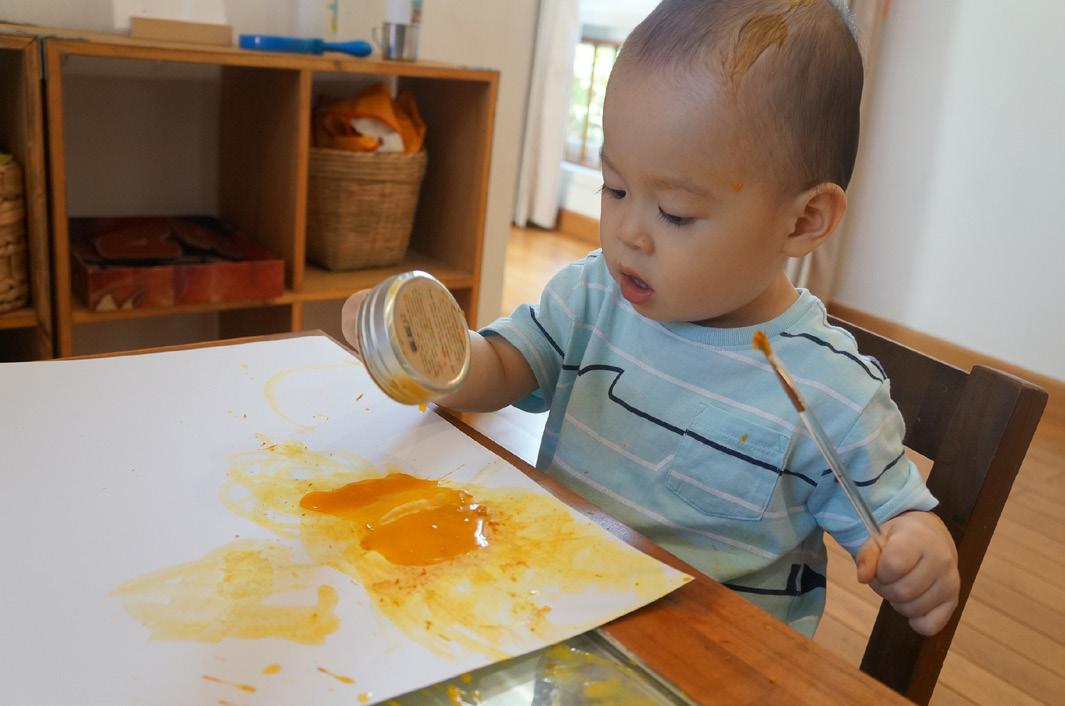
For those of you who were intent making more paint in order to learn more about the paint and your own process for creating it, we offered you acetate paper and more turmeric and water so that you could observe the two paint-creating materials on their own.
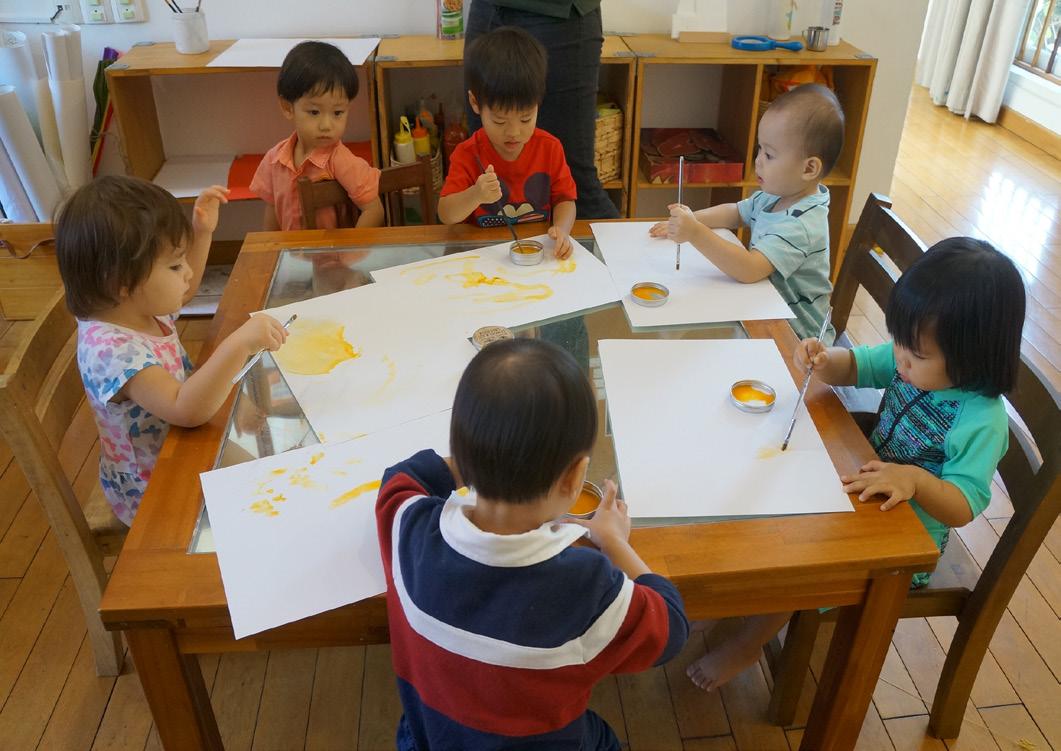
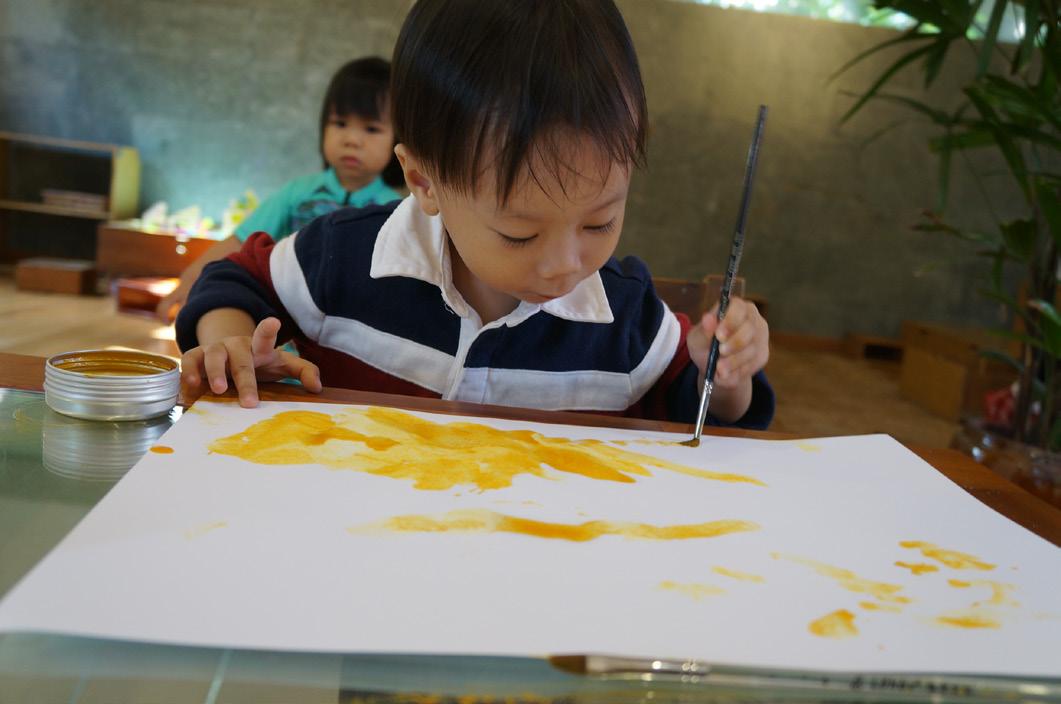
As part of our mark-making project, we decided to try a new mark-making technique: marbling! Our friends dropped ink into a water-based solution, swirled the ink and water using paintbrushes and dipped their papers onto the ink to reveal magical designs! Our friends marveled at the designs they were able to create and the way that the colors swirled in the water.
This experience, coupled with our passion for mark-making of all kinds, inspired us to try making our own paints from nature! We thought that our inquisitive friends would love to observe first hand how pigments, water and their own actions can work together to create color!
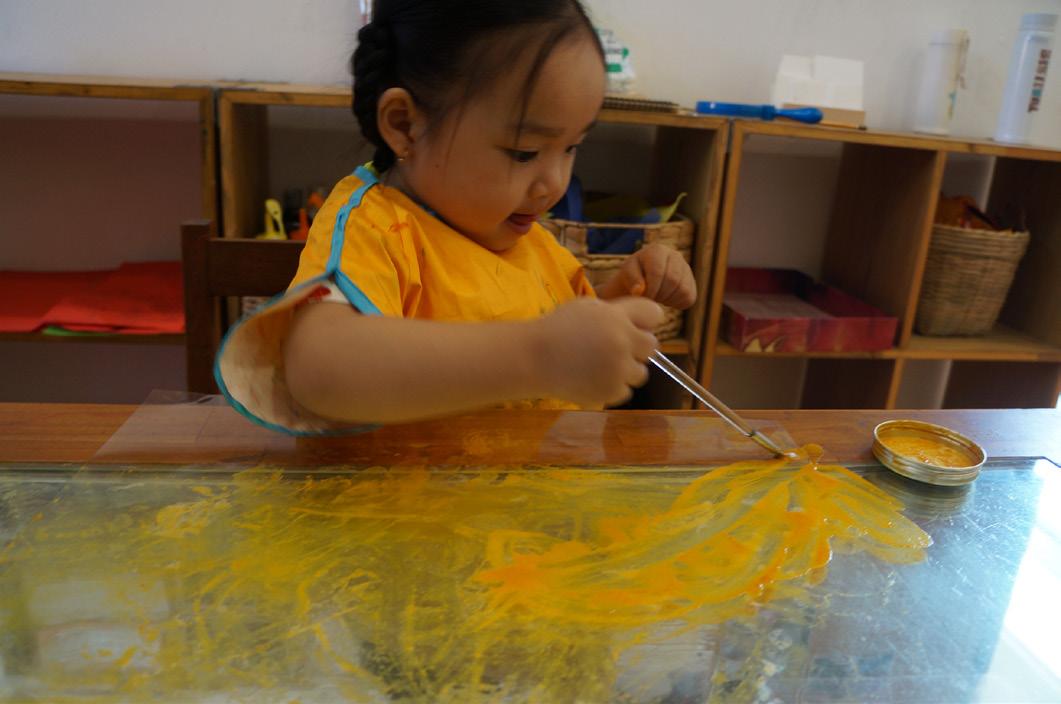
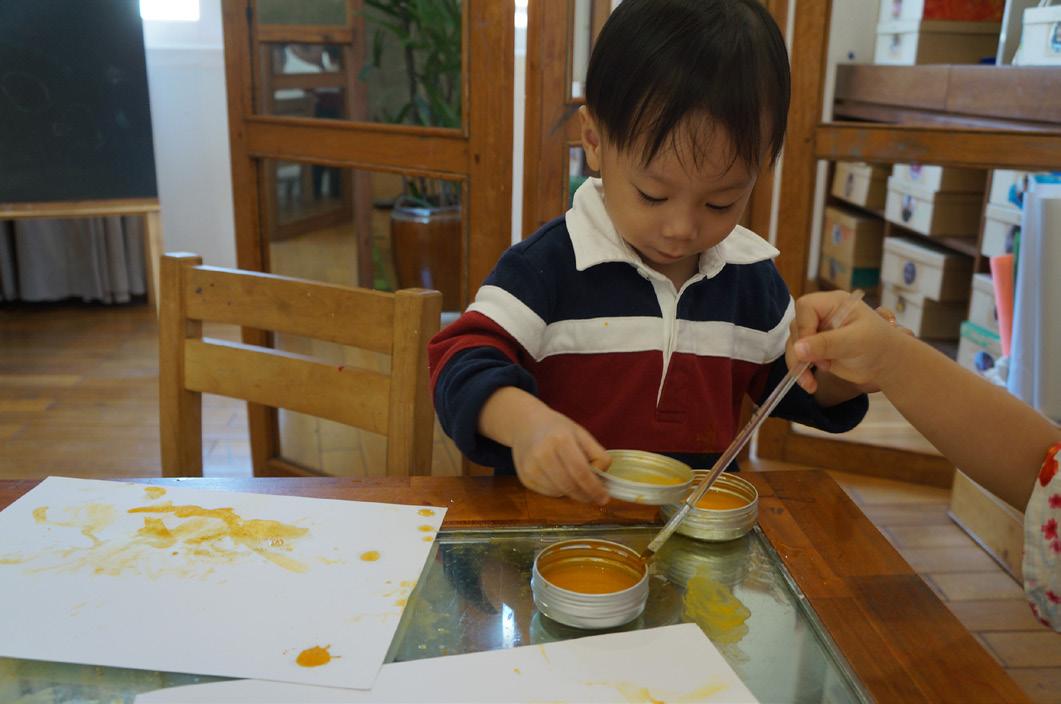
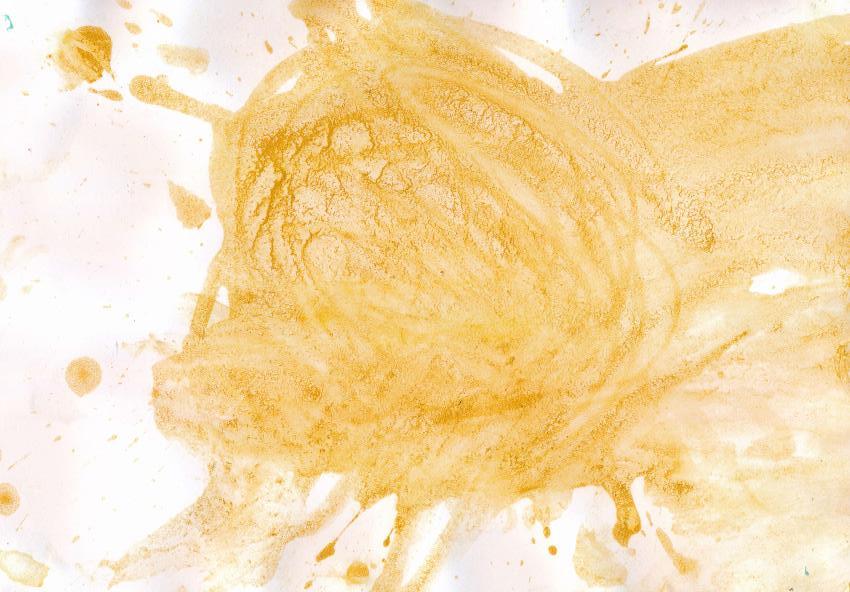
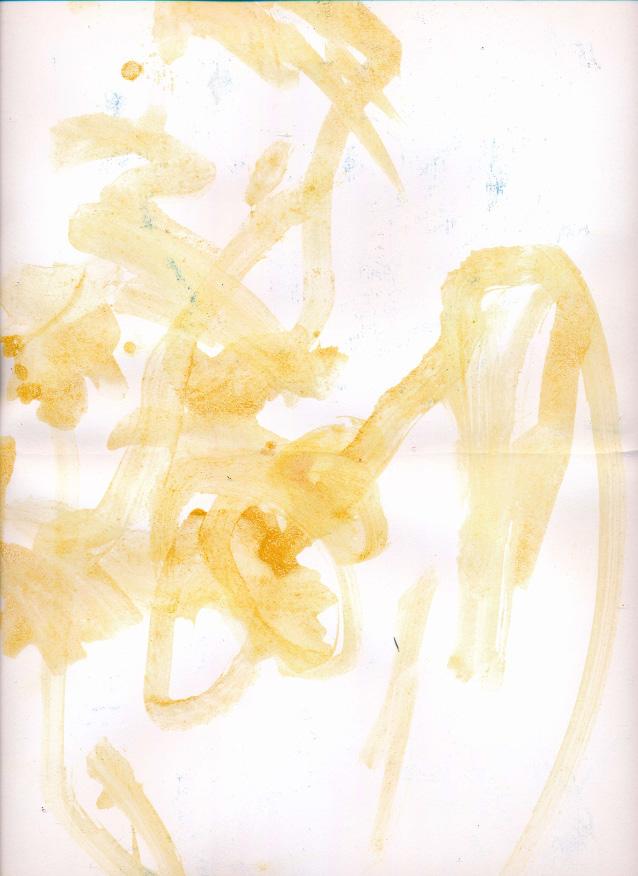
Next, we tried painting with Butterfly-pea flowers. These flowers are used to make a gorgeous blue tea. When citrus juice is added to the tea, it turns purple! How exciting! We decided to paint with the blue tea and to experiment with the color-changing effect by squeezing the lime juice directly onto the paper. We didn’t tell you what would happen, but a few of you discovered this amazing effect by yourselves! You looked astonished when you noticed that your paint had turned purple by adding something that was GREEN? This was very curious indeed… Others were focused on the many beautiful shades of blue that the tea could create. The natural blue shades were absolutely gorgeous. We think that you were also impressed by their beauty since many of you were very quiet as you worked. We offered you folded paper since we thought you might try pressing the blue flowers to extract more pigment. Instead, some of you experimented with mirrored images by folding your papers to reveal a mirrored painting on the other side. Some of you also enjoyed observing how the paint and juice dripped down your folded papers.
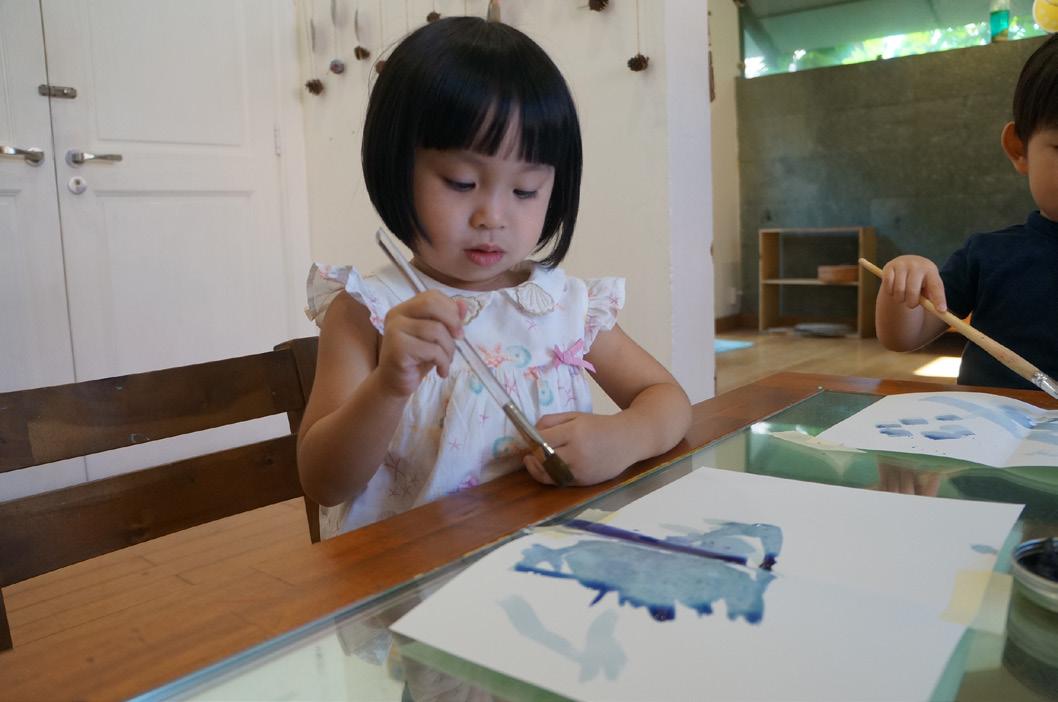

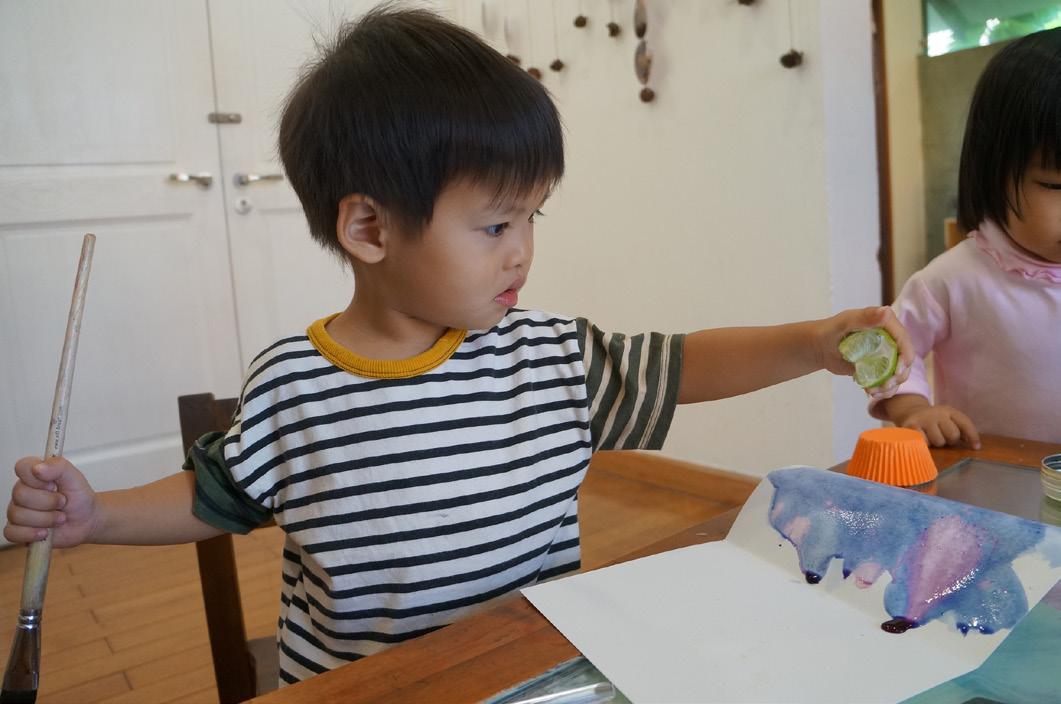
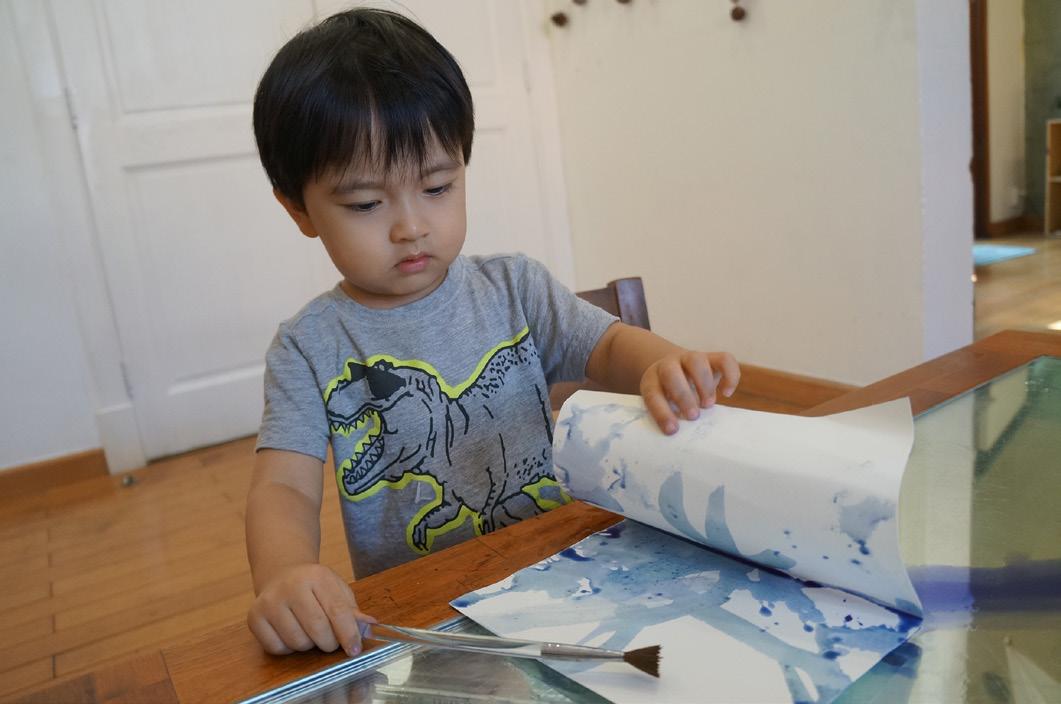

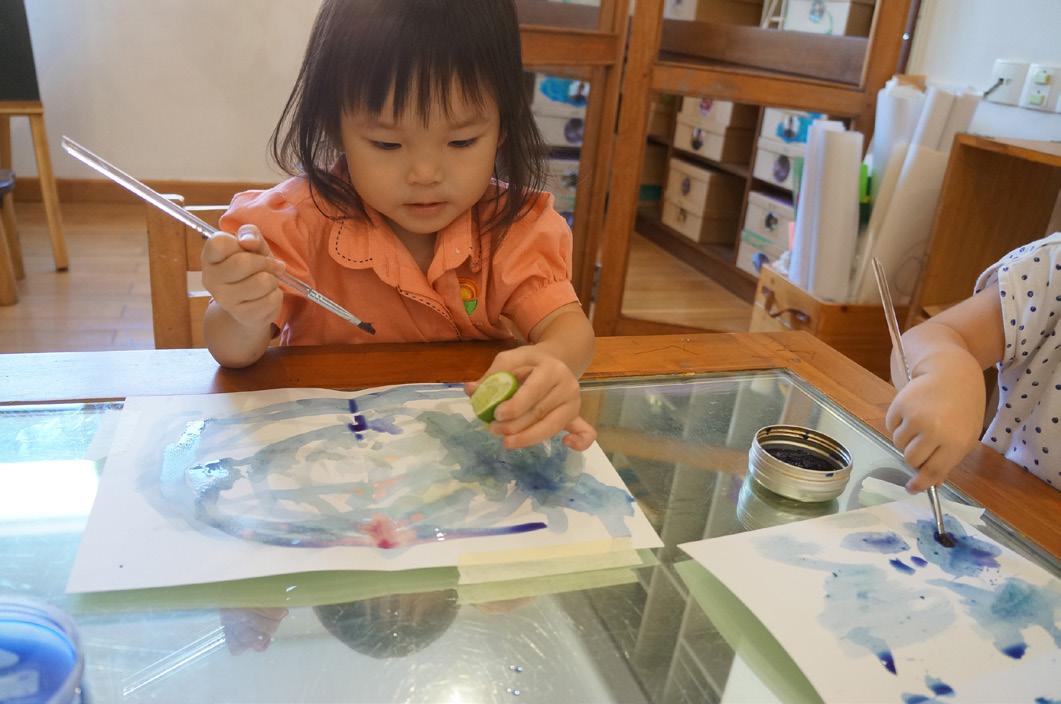
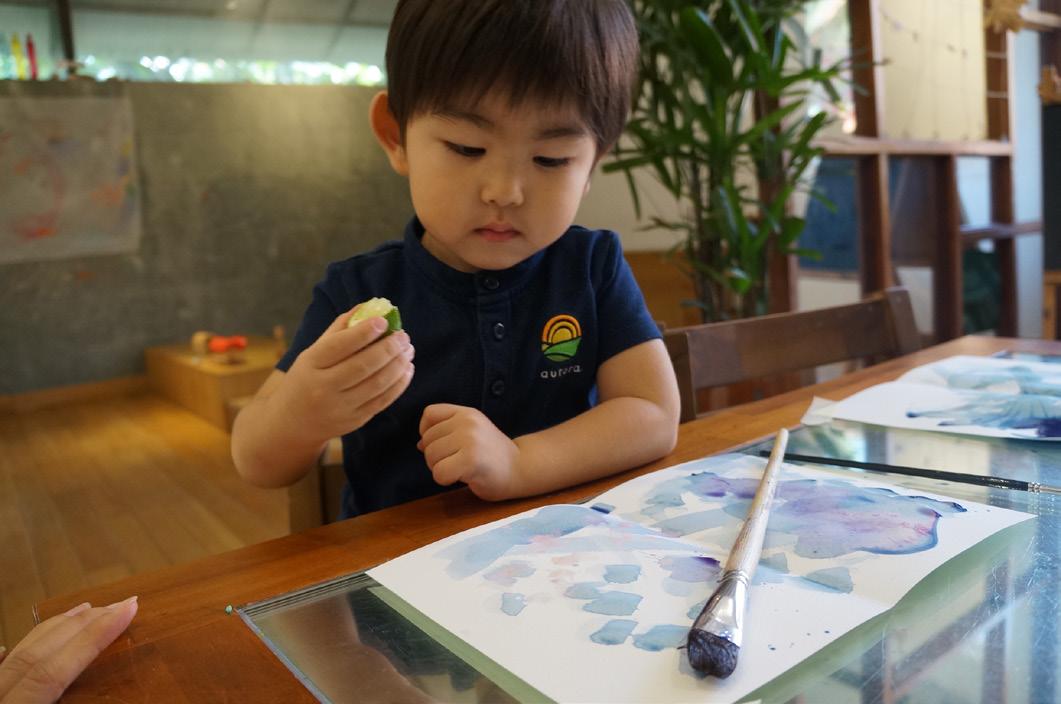
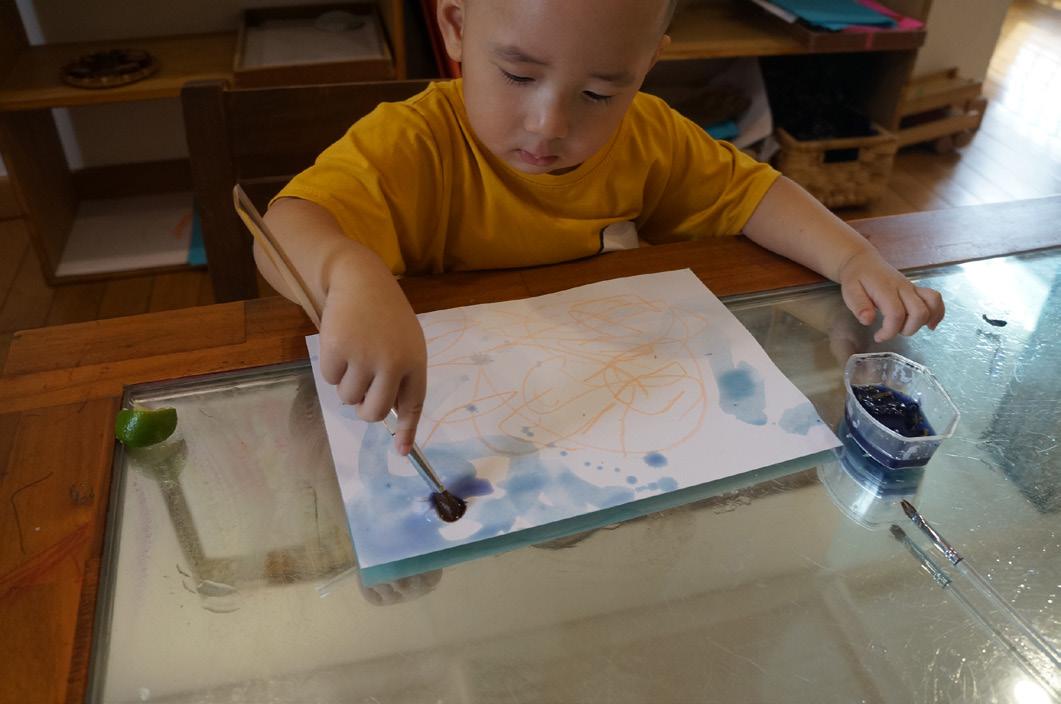
MJ, Mizuki, Emi and Jess drew with oil pastels before adding paint. Here is their conversation:
"It's so big"- Jess (referring to her slice of lime)
"It's so small"- Emi
"So strong"- Jess (squeezing her lime with FORCE!)
"Number 7!"- (MJ points to his paper with a blue seven painted on it)
"MJ number 7 already. MJ number one!"
"Look! So many lemons! So sweet- it smells so good! Look here, so many!"Jess (squeezing more and more lime juice onto her picture)
"W!"- MJ
"A, B, C, D"- Emi (begins singing)
“Oh my goodness; Ms. Mary oh my goodness”- Emi (pointing at Mizuki mixing lime in the paint)
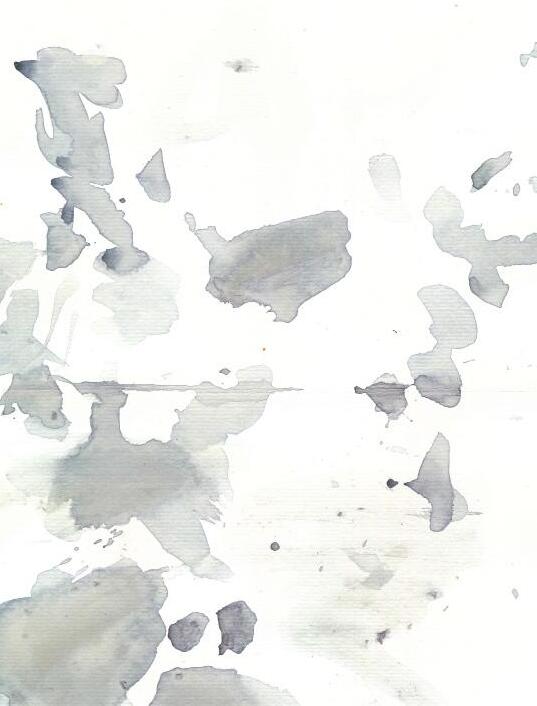
It is important to revisit experiences so that we can observe how our skills, interests and knowledge have evolved over time. As we predicted, our friends have begun working together in incredible ways. They observe each other and offer their help. They mimic their friends’ work and also share their own ideas.
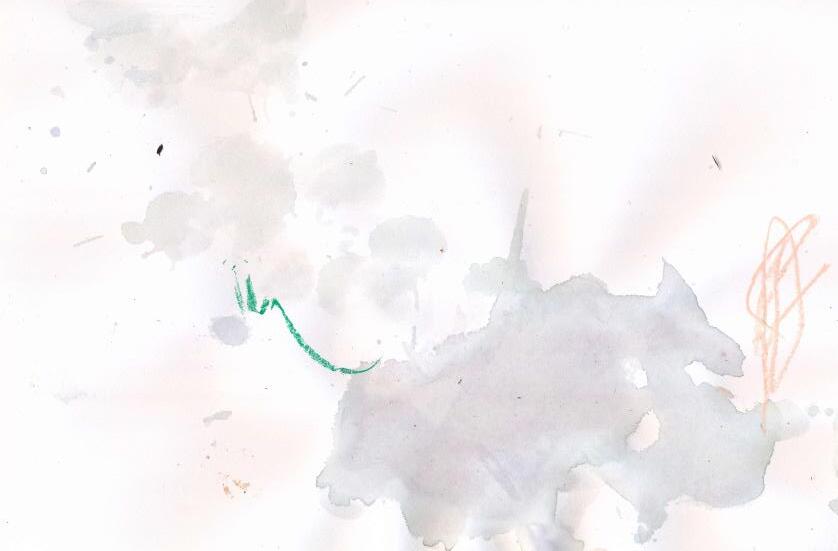
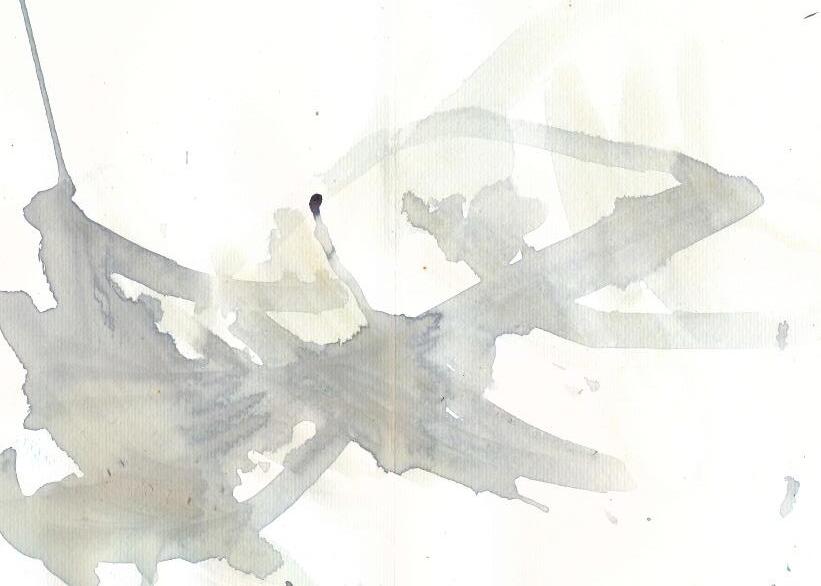
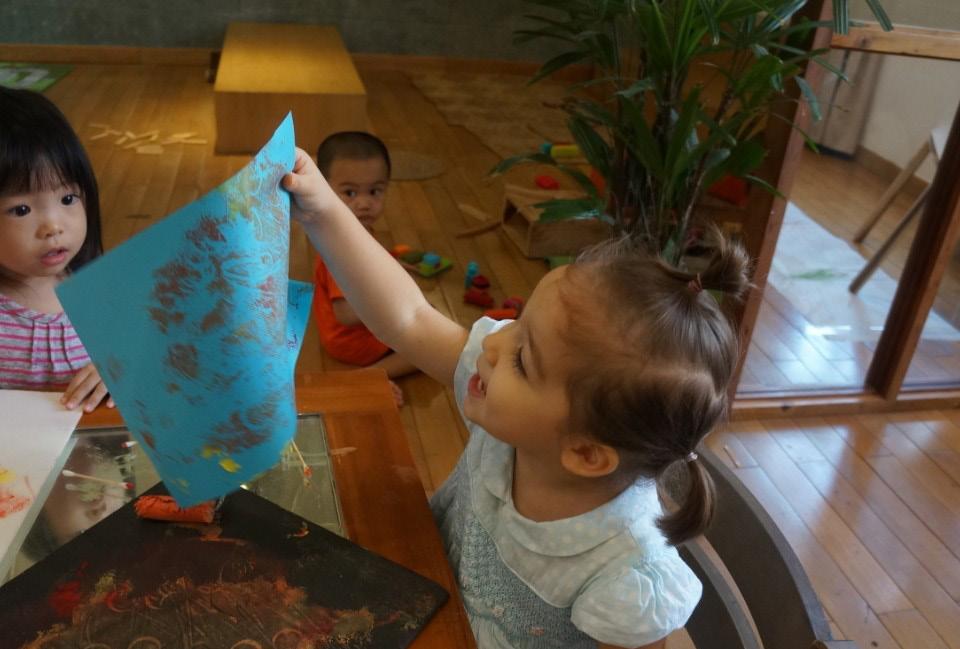
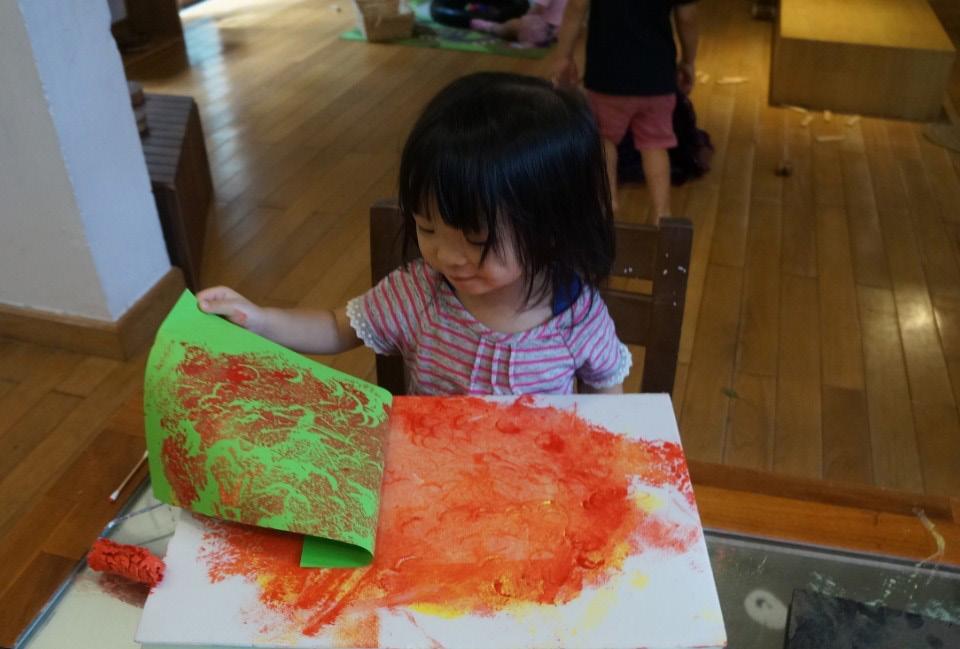
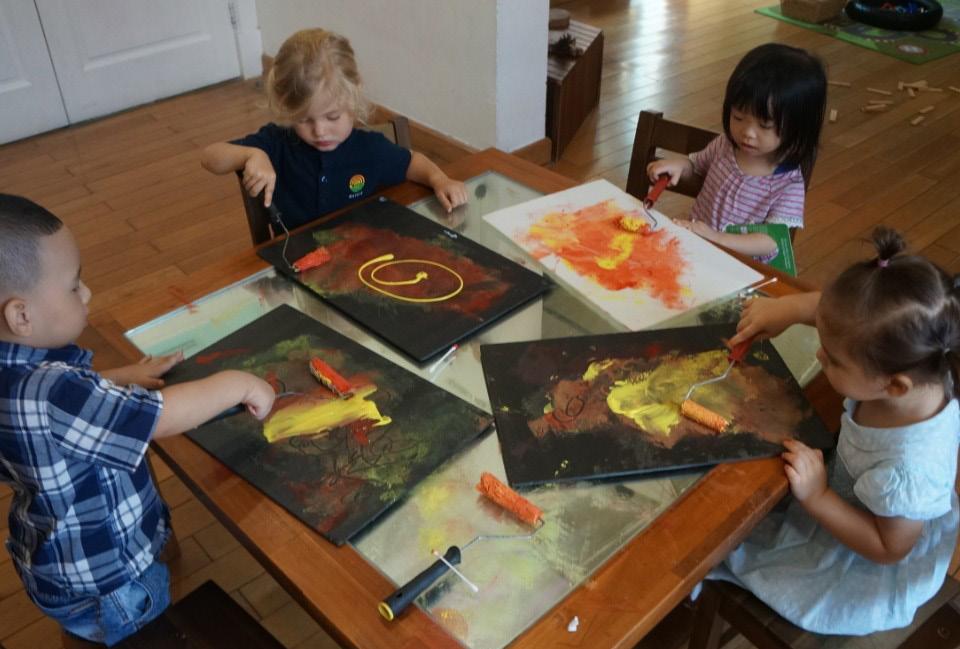
Wing Wing, you made a series of incredible paintings by stamping paint from a nearly empty paint bottle! You asked for more and more paint bottles in different colors: "more, more, more please." - Wing Wing
On this morning, we tried a new printmaking technique called monoprinting! We rolled out the paint and drew lines in the paint using q-tips! After that, we pressed a piece of paper down and gently rubbed the back of the paper before picking it up to reveal our print! You all understood how to do the technique quite quickly! We were so impressed! You loved revealing your special prints!
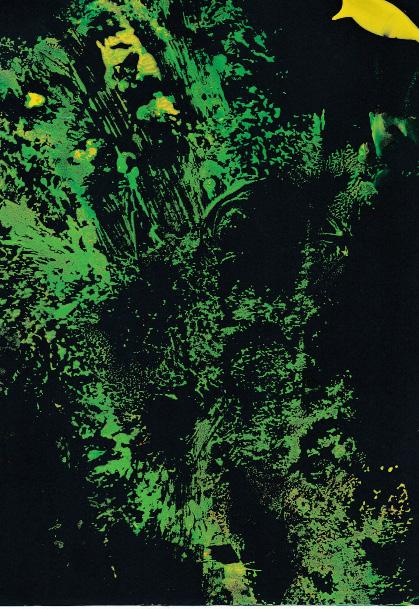
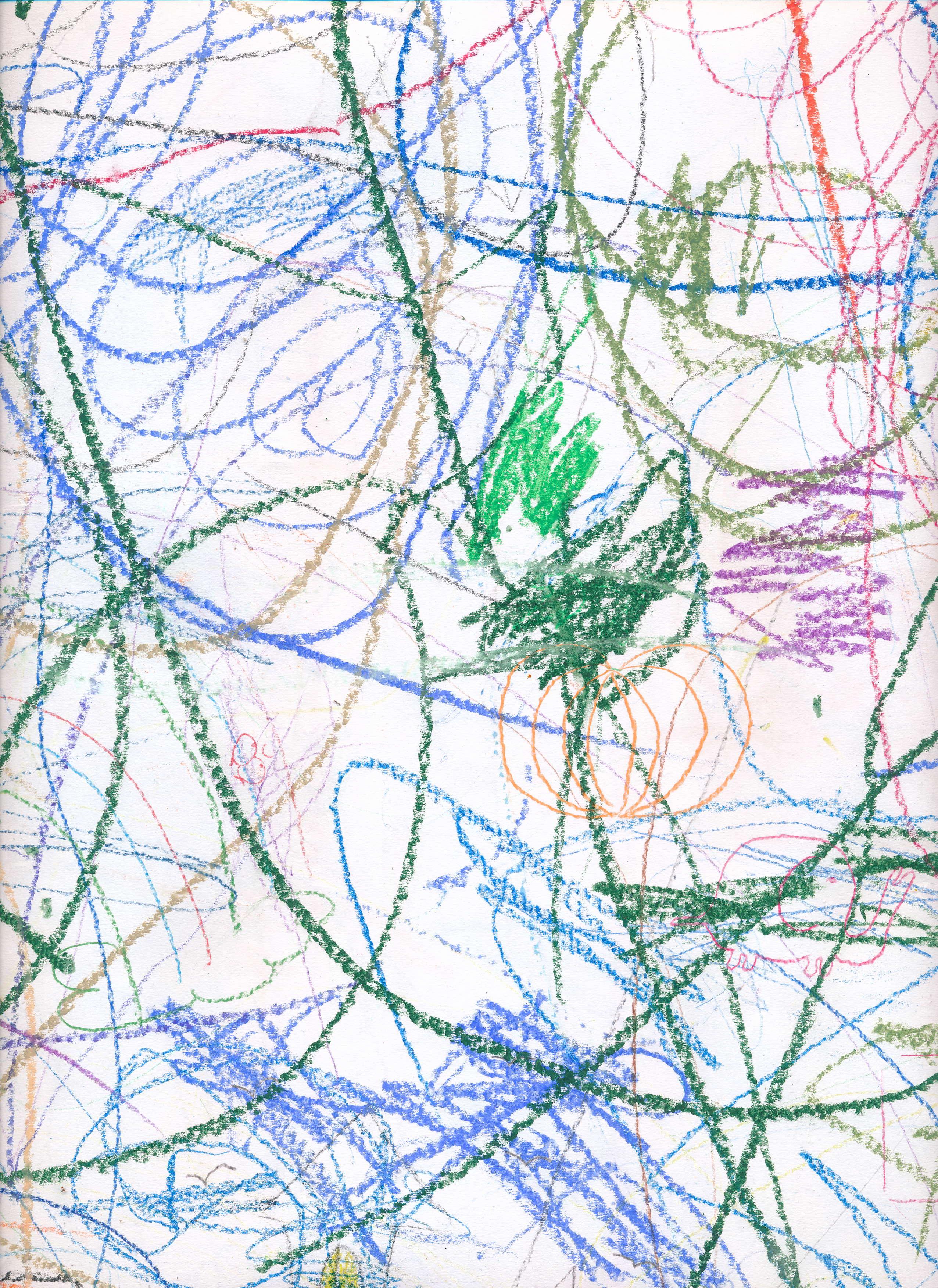
Knowing how passionate we are about mark-making, Ms Charlotte decided to introduce a new material to us: inks! Over the course of a few weeks, we worked on individual pieces on white paper and brightly colored paper. We experimented with different mark-making tools: leaves from the garden, brushes and sticks! Finally, we began working on a collaborative piece inspired by the collaborative pieces we created at the beginning of the year using pencils and felt-tip pens. One day, we used red and green inks. Another day, we used red and purple. You were very interested in experimenting with brushes and sticks to make highly original and creative marks and designs. A small group of you were especially interested in working with the bold inks and the different mark-making tools.

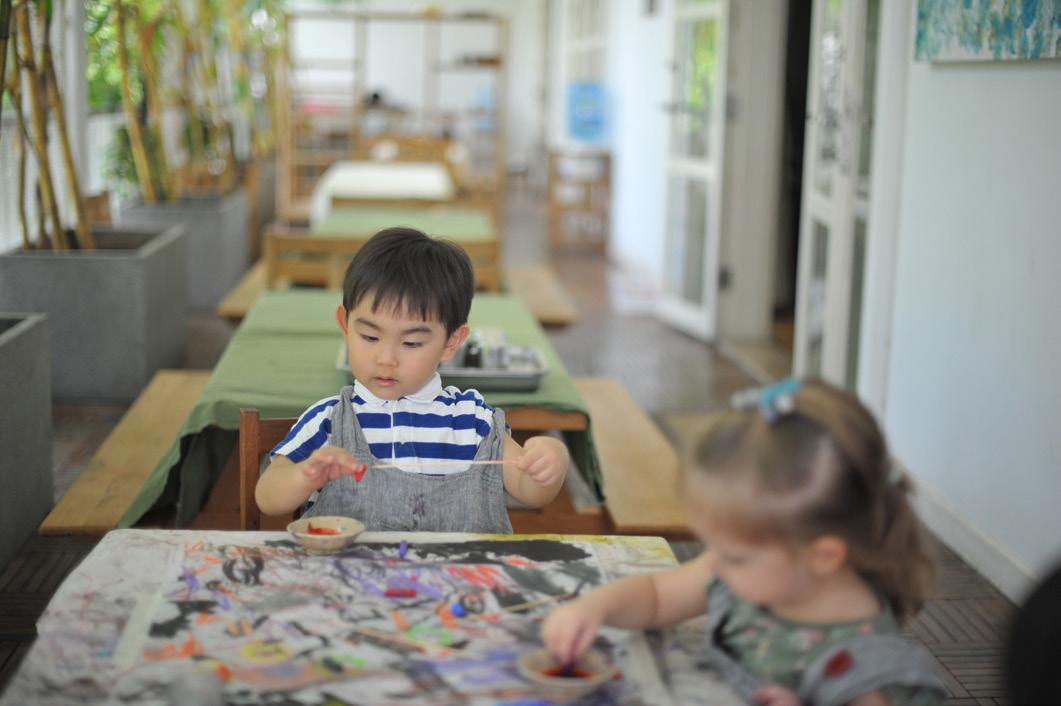
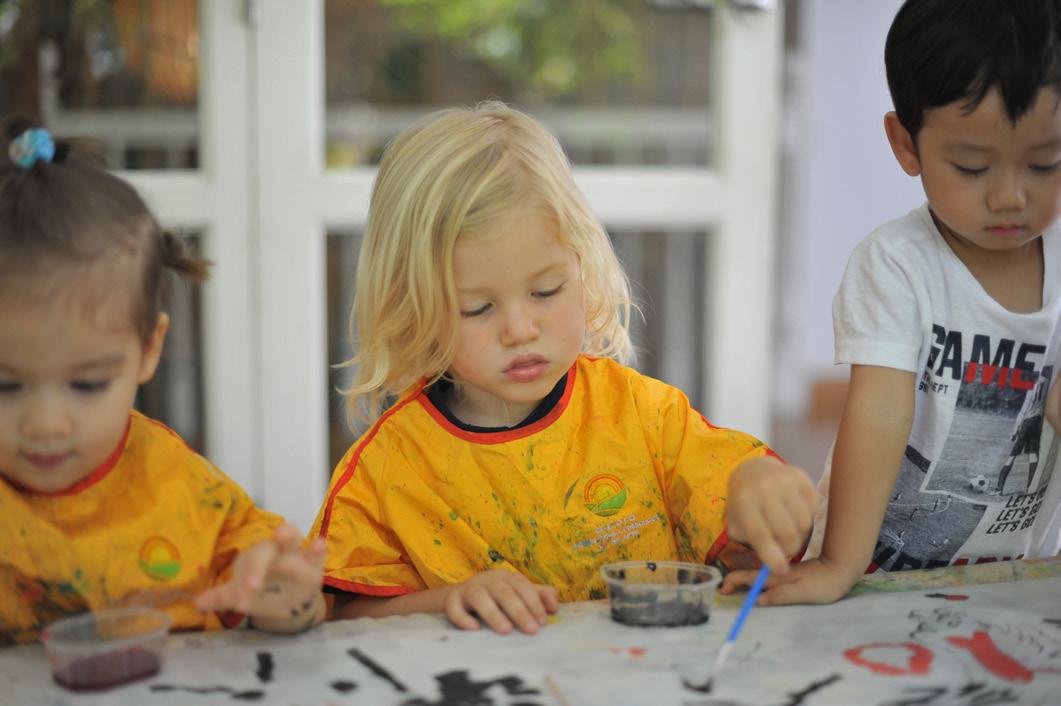
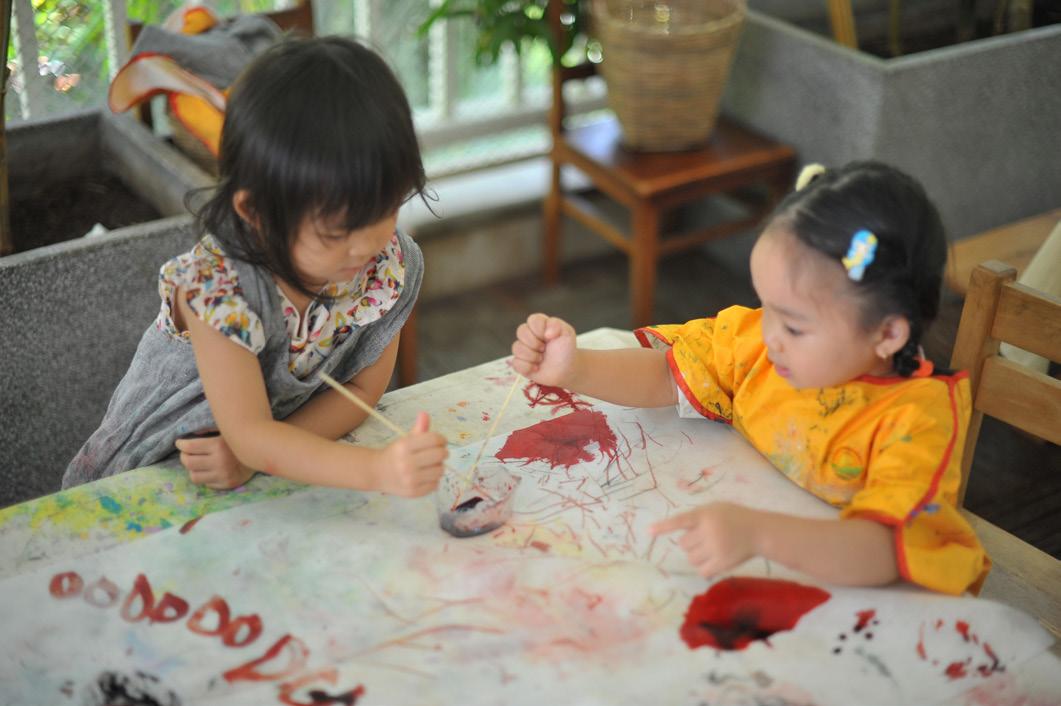
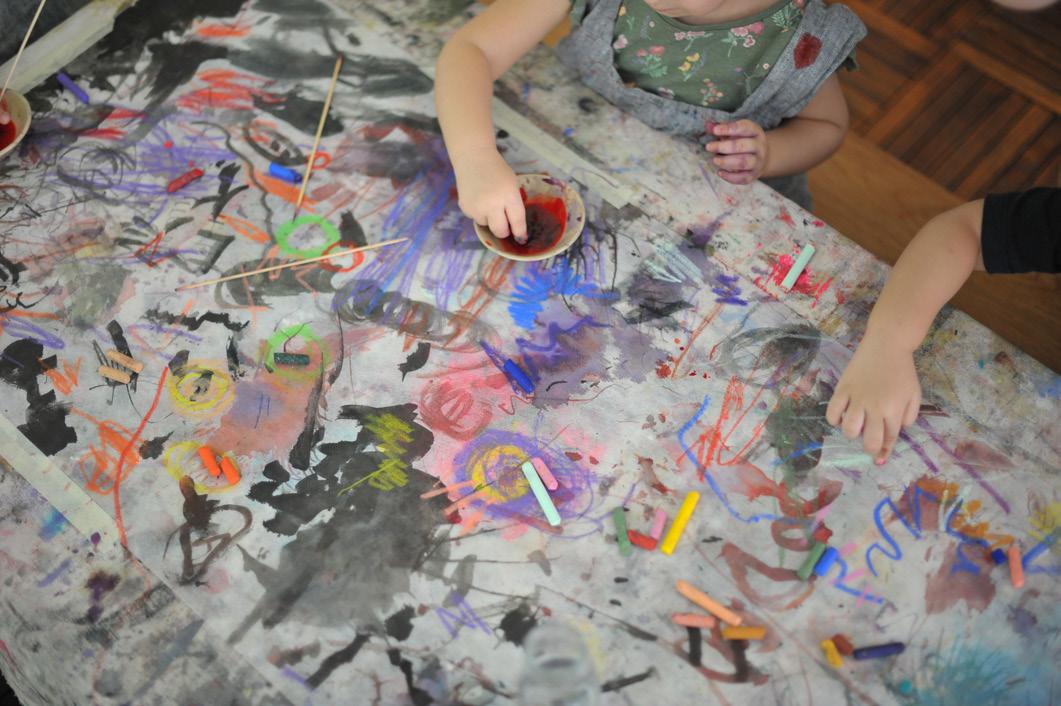
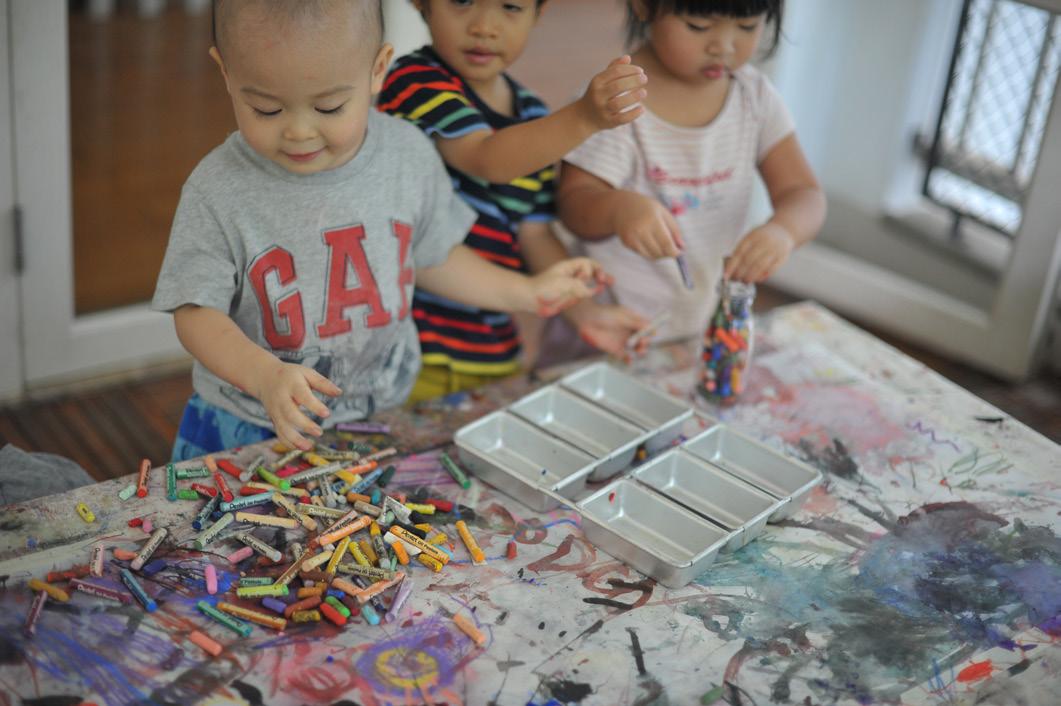
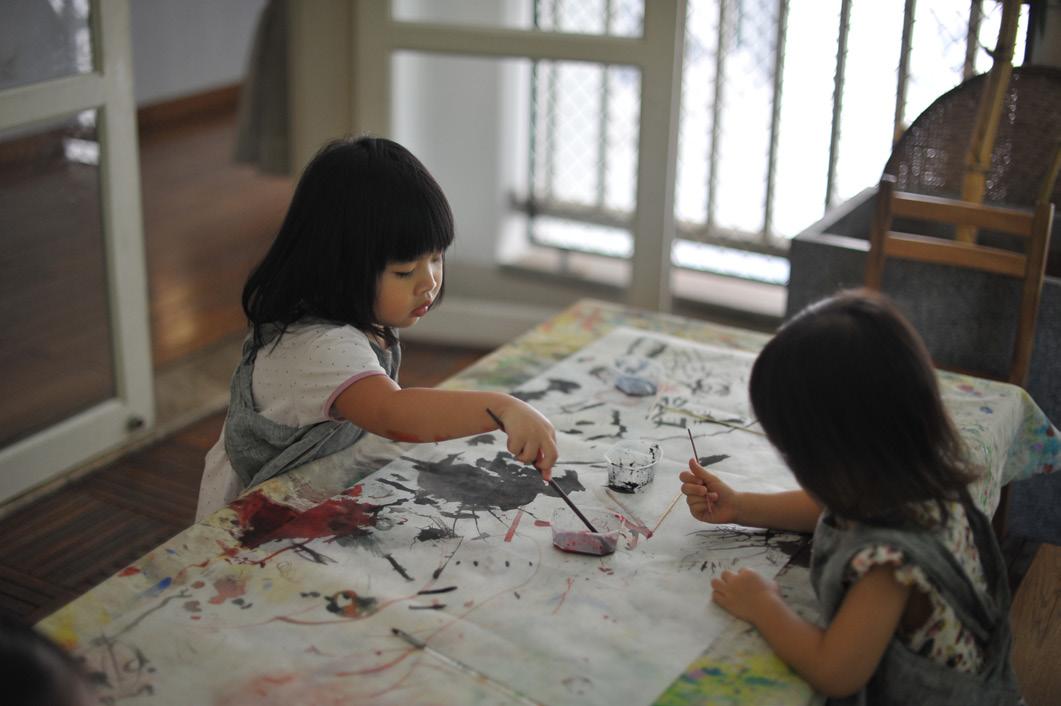
We decided to add another layer to our collaborative piece as we love to do. We had many oil pastels in all shades and hues! Your faces lit up when you saw so many rich colors! You added bold, interesting and playful marks to our piece. How do your first collaborative pieces compare to this one? What new lines and shapes have you discovered? How does this piece make you feel? What does this piece tell you about the children who created it?
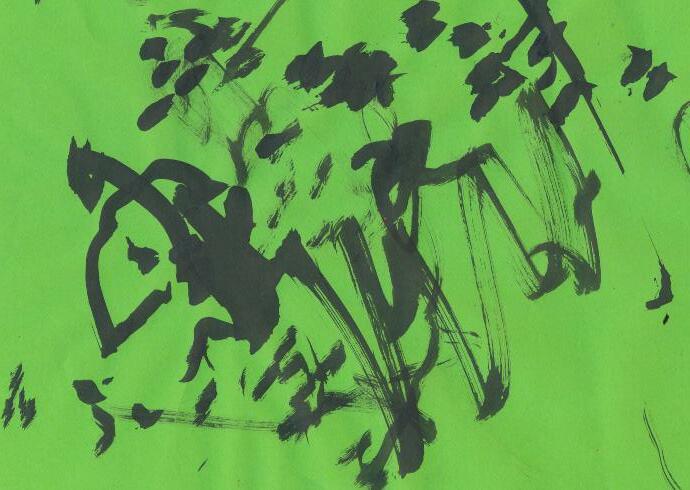
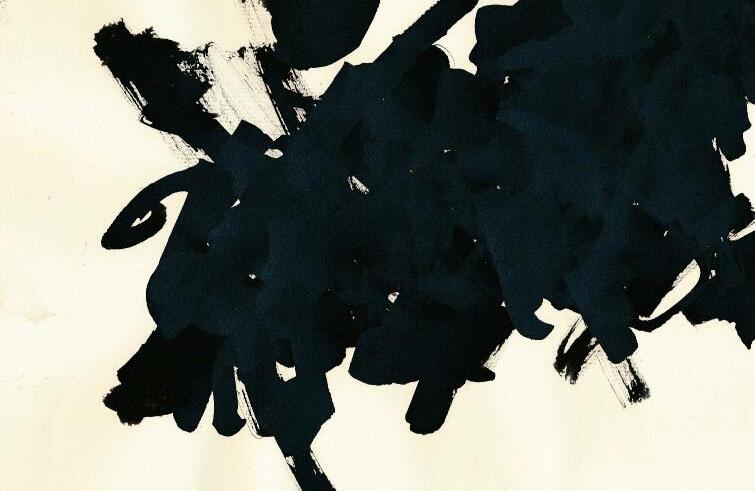
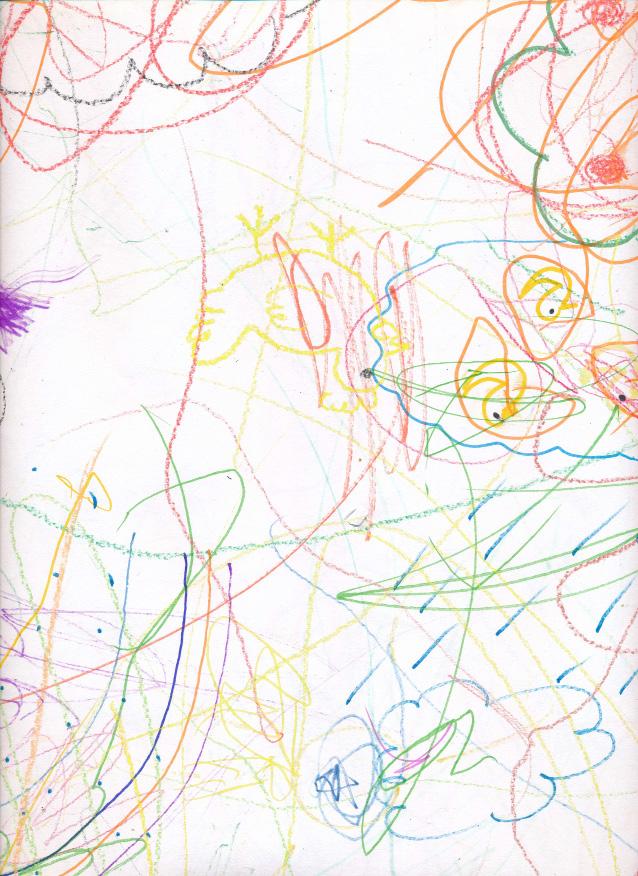
It has been an honor to witness your transformation this year, Clover children. Since the beginning of the year, you have been passionate researchers of line, color, movement and the relationship between ourselves and the marks we make. As you grow and change, we observe you looking to your friends for inspiration, answers, jokes and shared passions. You are more and more interested in connecting with your peers, and you see drawing as a way for you to come together, to share and to grow. As you grow, we hope that you continue to explore “the infinite resources” available to you and within you. We hope that you continue to draw, to paint, to etch, to explore further, think deeper and to dare to change the world around you. We love the moments when you look at each other and know that the other will enjoy your idea or joke or even already be thinking about the same thing. Human connection gives us joy, strength and love, and you have all already found those things in each other.
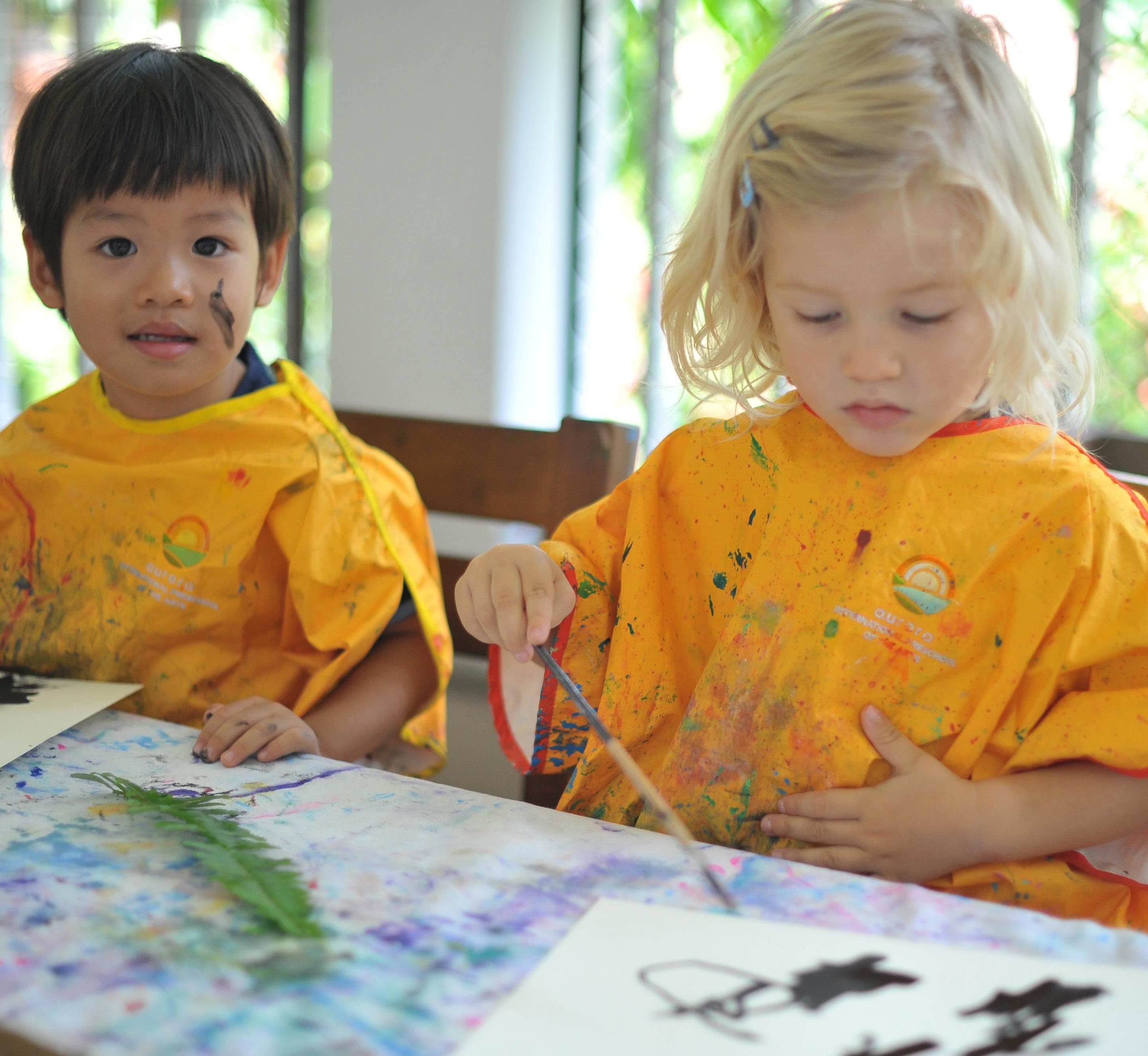
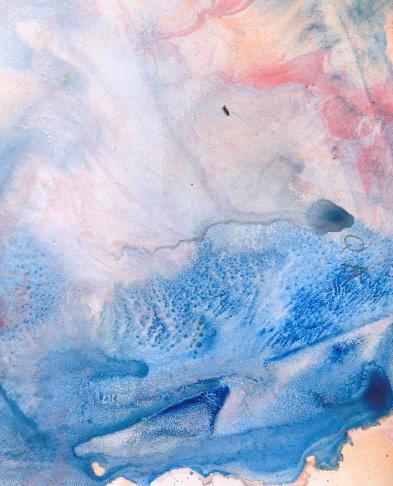
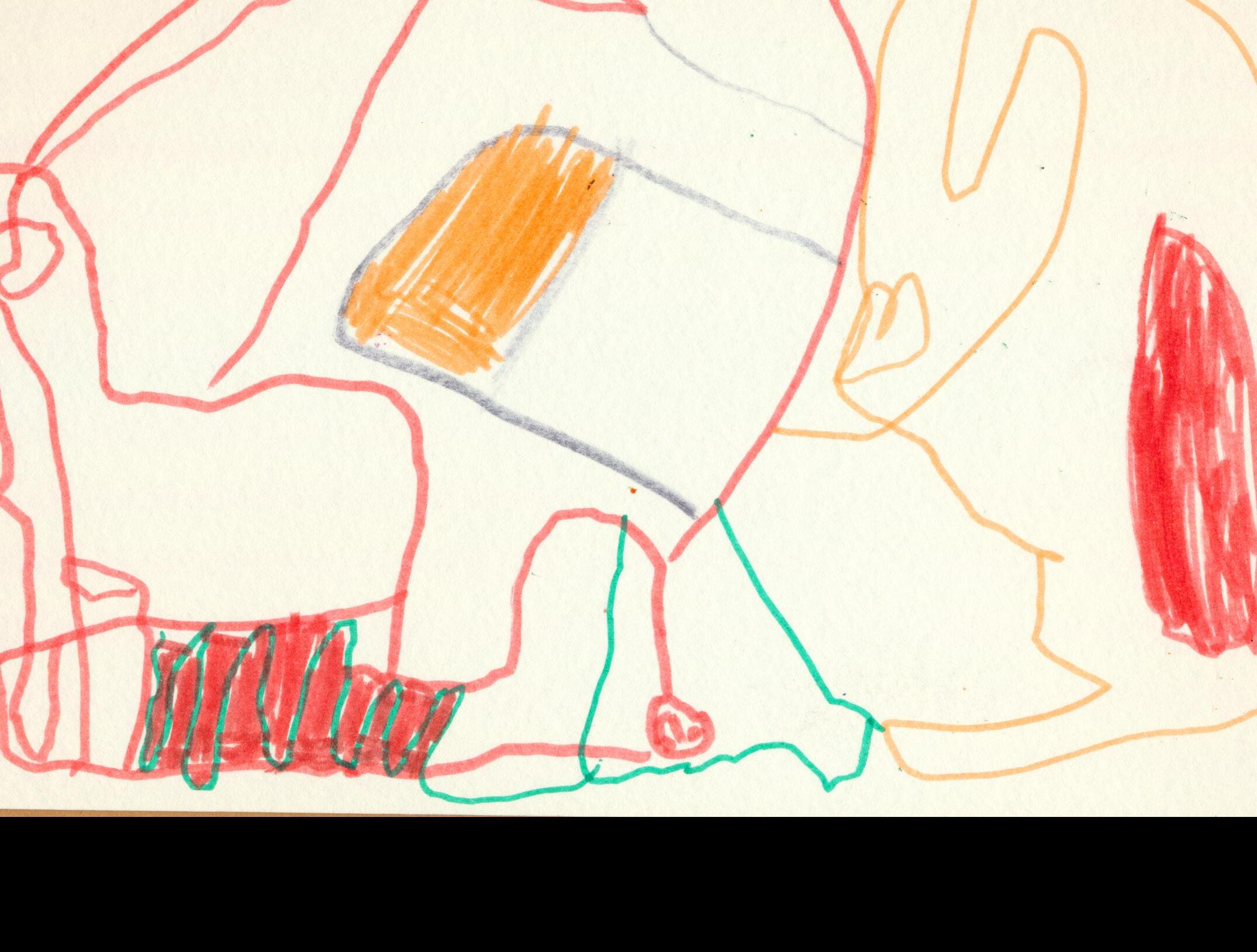

Copyright 2021 Aurora International School Of The Art © Spring Hill Education Vietnam®. All rights reserved.
11 - 11A - 13 Tran Ngoc Dien, Thao Dien Ward, Thu Duc City, Ho Chi Minh City, Vietnam. +84 (028) 3744 2991 www.aurorareggio.com Scholastic Year 2020/2021